by Ruth Blacker Waite, 2012
"Not to know what happened before we were born is to remain perpetually a child. For what is the worth of a human life unless it is woven into the lives of our ancestors." -- Cicero, Roman Statesman & Orator
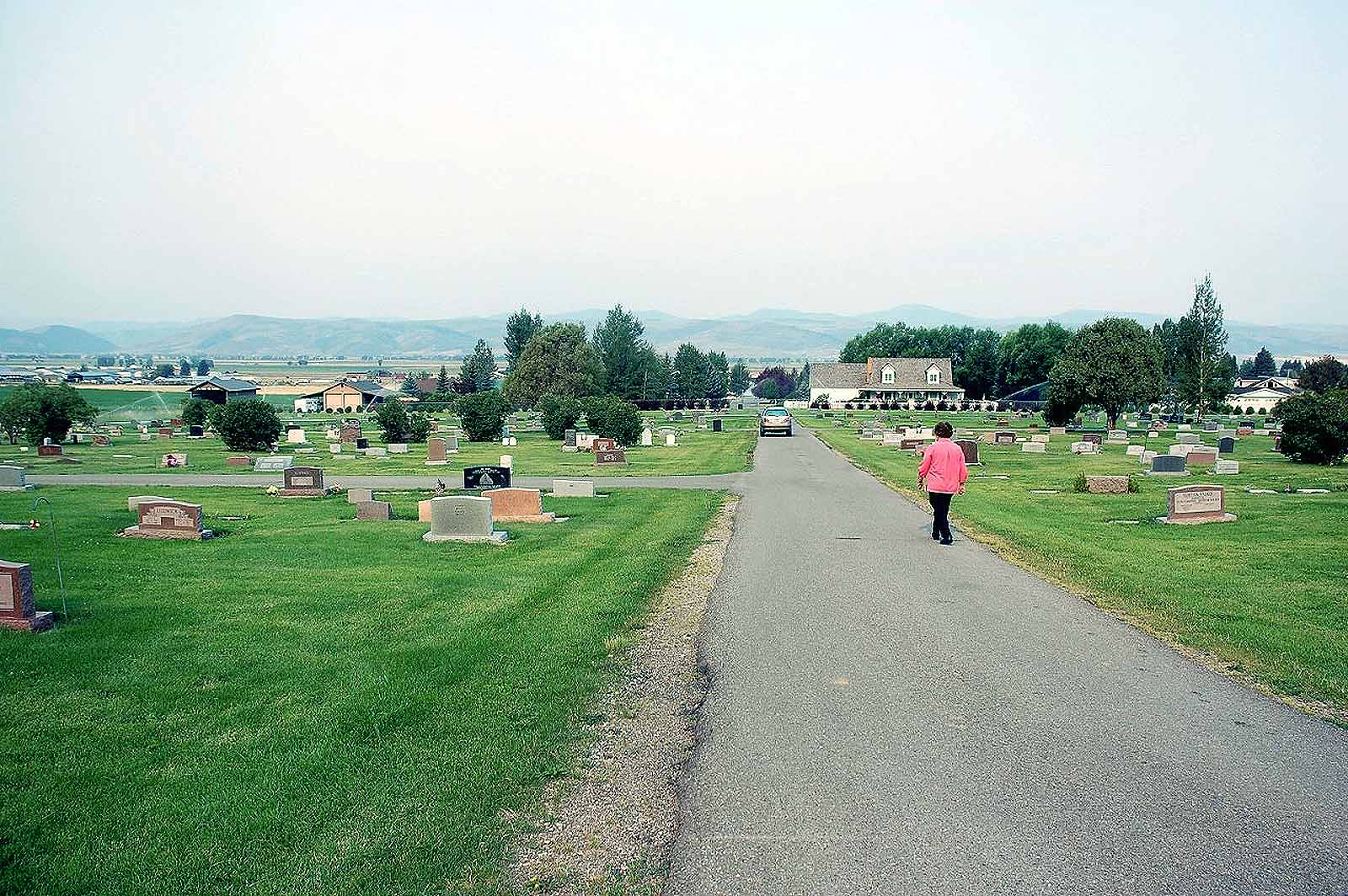 Afton, Wyoming Cemetery, August 14, 2012
Afton, Wyoming Cemetery, August 14, 2012
It was a beautiful evening in the Afton, Wyoming cemetery as I stood with my husband, Laron, at the grave sites of some of my ancestors. We had traveled from our home in Heyburn, Idaho to look for further information concerning my ancestors who had lived there. It was August 14th, 2012, and though the air was hazy from the many range and forest fires of this dry year, the cemetery was beautiful and peaceful. We had found the graves from the cemetery register at the gate, and as most of them were in the area G-7, they were easy to find. There, close together, were buried my great grandfather, Edward Blacker, his wife, Althera Loveday, their son, Hyrum, who had passed away at the age of thirty, and Althera's father, Isaac Loveday.
Not very far away, actually in the same G-7-8 area, rested others of my Wilkes ancestors... my great grandfather, John Wilkes and his wife, Martha Elizabeth Hunt, as well as their son, John D. Wilkes and his wife Luella Child and their two children, Norma Luella, and Deloyd C., who had died as young children.
Because both my parents were avid genealogists, and had carefully documented their family histories, we children had been raised on stories of our ancestors. We are so very grateful for the wonderful stories that have made our ancestors so familiar and alive to us. However, at times, I would mix up some of the stories, attributing some incidents to the wrong ancestor. Because of the increasing numbers of ancestors, as a person goes back in time, it becomes very difficult to keep them all straight. So, when Laron and I were in the Afton Cemetery, amidst the graves of Blackers, Wilkes, Lovedays and Hunts, I found I didn't know how and when all these families came to Afton and how their lives entertwined. All of this information was in two very large books written by my father, Edward Loyn Blacker, entitled... "The Blacker Epic" and "The Wilkes Epic". Finding it difficult to try and remember exactly who was who, I have decided to make a condensed history concerning those families who came to Afton, drawing from the information in both volumes, and other sources. I want to remind readers that much more of these individuals' stories, and those of their ancestry can be found in either of my father's Epics. My husband and I have put both epics onto our family website...lrwaite.net, since most of the family won't have access to the books.
For the purpose of this history, we will return to the British Isles, to find and follow only those of our families who emigrated from their homes there and eventually helped settle Afton, Wyoming.
In the ancient town of Tewkesbury, Gloucestershire, a William Wilkes married Elizabeth Haines or Haynes on March 15, 1846. Interestingly, Wilford Woodruff took the gospel to John Benbow's farm and baptized many in the well-known pond. Benbow's farm is about ten miles from Tewkesbury, so the Wilkes and the Haines families were some of the early members of the church in that area. William was a brick maker, and on one census states that he was also a stocking weaver, one of the industries of England. They had two children, Sarah and John, when it was decided they would emigrate to the United States to join the great movement of building up the Church. William came first on the ship, "William Stetson", landing in New York May 28, 1855, listing his occupation on the ship's manifest as a brick maker. Elizabeth, Sarah and John, ages five and three, followed, arriving in New York on the ship "Caravan", March 21, 1856, after a very difficult voyage.
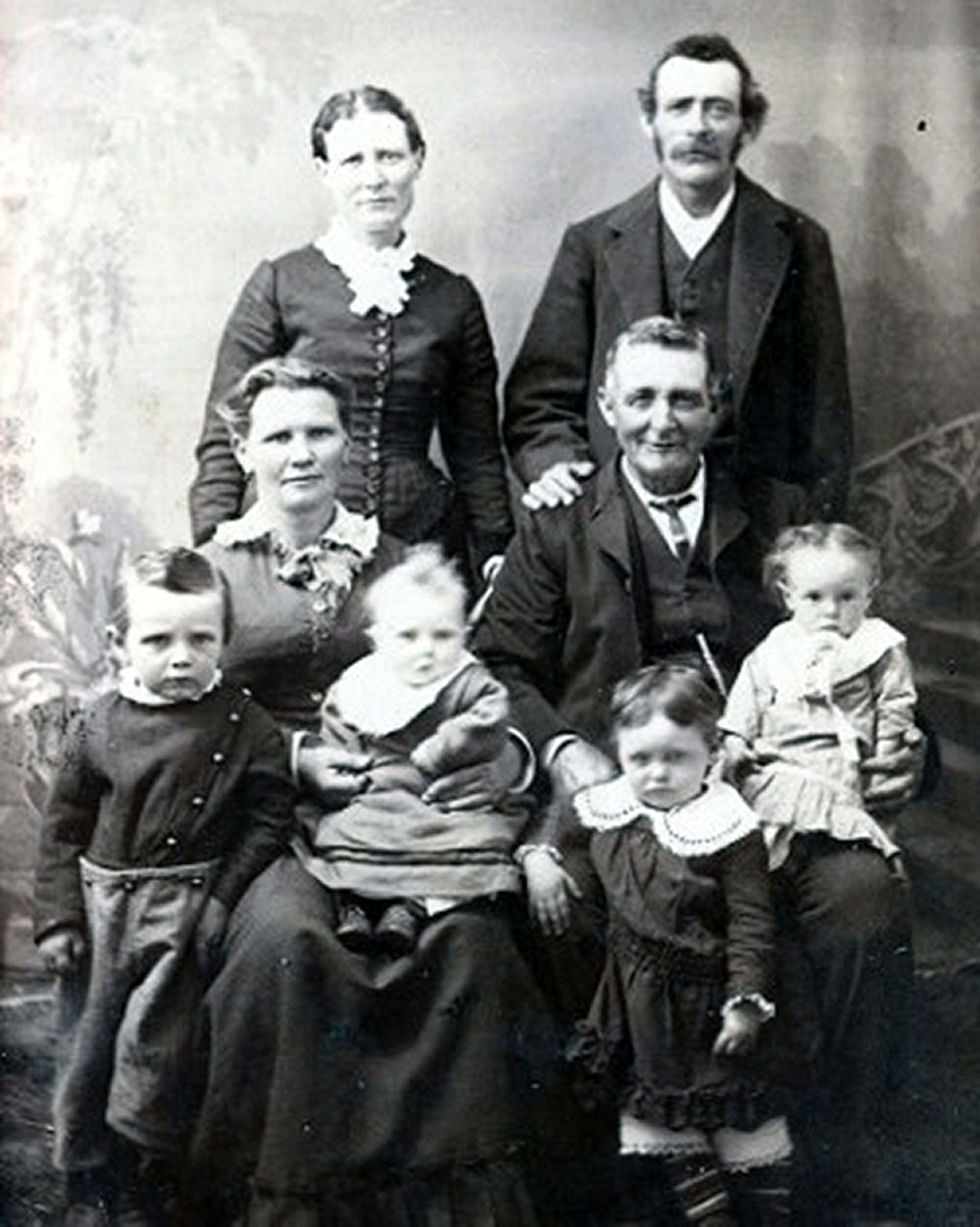 William Wilkes & Jacobine Hemmert
William Wilkes & Jacobine Hemmert
My father with all his many years of research, had never been able to find information concerning how the Wilkes traveled from New York to Salt Lake City. However, with new modern technology and recent access to various records previously not available, we can find information he couldn't. On the Mormon Pioneer Overland Travel site, we find that the Wilkes joined with the Jacob Hofheins/Matthew McCune Company of LDS pioneers, which seemed to consist of wagons pulled by oxen. They crossed the plains during the summer of 1857. Journal entries of some of the fellow travelers give us this information...
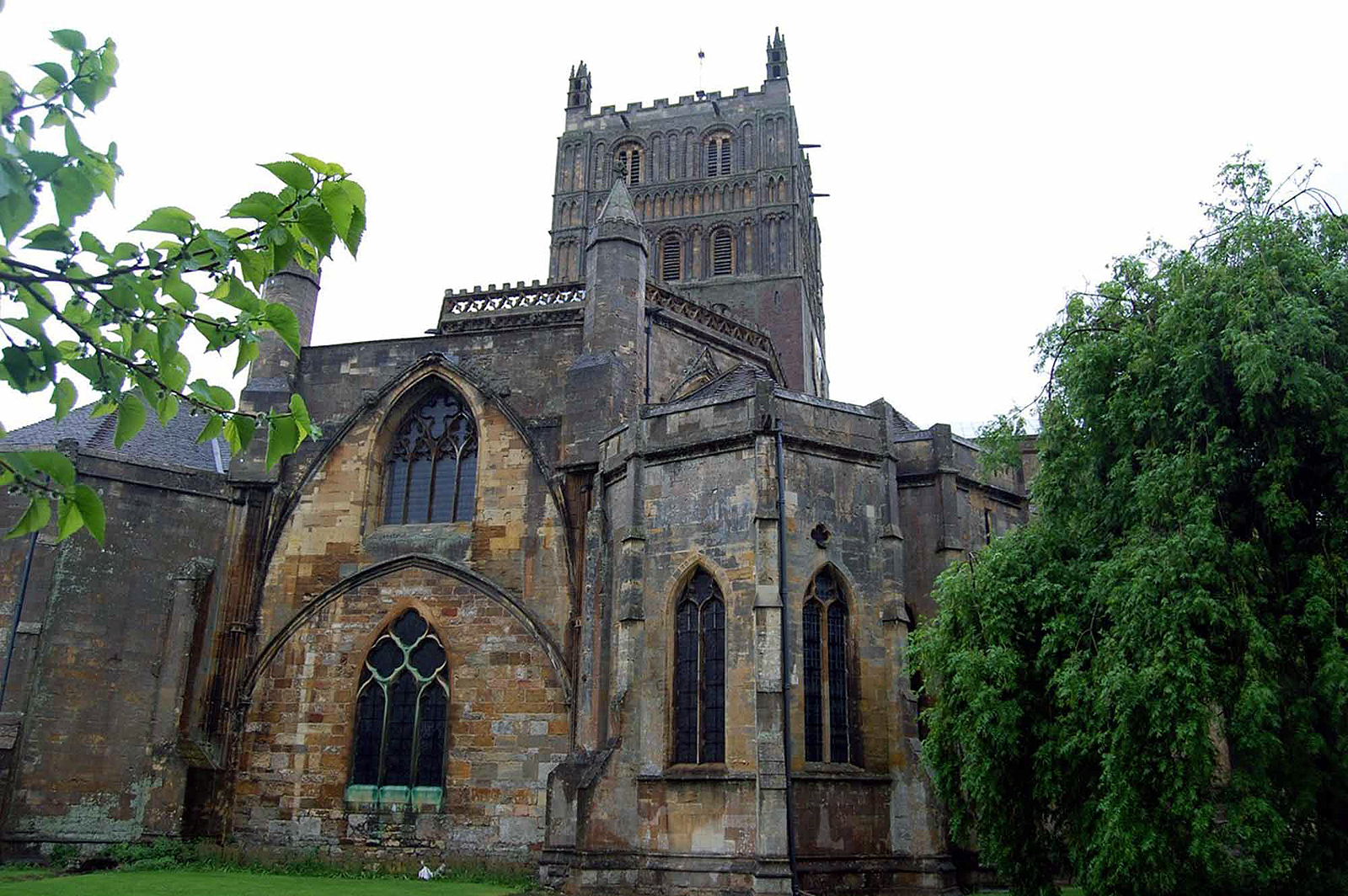 Tewkesbury Abbey, 2005
Tewkesbury Abbey, 2005
"This after noon we drove five. Miles, and camp for night on a Slough where the road enter the Bluffs, I was call Apond last night about .2. A.M. to administer to Sister Wilks [Elizabeth Haines Wilkes], who was taking very Sick with hard Paines in her Bowls[.] Brothers Forman [Joseph Foreman] and Linyi assised me in the Administeration, to day about 12 o clock I with Brothers [James Henry] Hart and Dusten [John William Dutson] was Call Apond to administer to Brother [Jesse Easters] Muffy [Murphy.] To day about 1. P.M. Sister Brown died from a Sudent fright which was cause by one of the Oxen kicken her Husband as she was look out of the wagon. She saw the Ox kick him, She Spok, there the Ox has kick Mr. Brown, and he will now be layed up from this[.] She fell and inistently dead and did not breath after wards" (Taken from the diary of Thomas Terry)
We wish we knew more of the circumstances of this journey. Did our Wilkes family have a wagon and oxen, or did they come along with another family, sharing the expenses?
This wagon train, along with our family, arrived in Salt Lake where they lived for a number of years, heading south with the saints to escape Johnston's Army. They eventually moved to St. Charles, Idaho,on the shores of Bear Lake, and suffered much from settling this small community. Their son, John had been crippled by polio at some time when very young. Being unable to do what other young people could do, he spent much of his time herding animals for his and other families.
Also living in early St. Charles, (named after Apostle Charles C. Rich who was sent to help settle the area) was the family of Daniel D. Hunt and Martha Eynon. Daniel had been born in the United States, in Roane County, North Carolina. His very interesting life can be further explored in Chapter 5 of the Wilkes Epic. Daniel had been married to Nancy Davis and had helped build the Nauvoo Temple. After having several children, Nancy died, and he married her sister, Susan Davis, with whom it appears he had no children, and at some point, also married Martha Eynon.
My father had never been able to trace this family from Nauvoo to Utah, but again we have learned more from the Mormon Pioneer Overland Travel site. There is still some confusion as to when Daniel and Martha were married, whether at the beginning of the trek while he was still married to Susan, or possibly upon the death of Susan from cholera during their journey. All we know is that Martha is listed with their company, not as Martha Eynon, but as Martha Hunt.
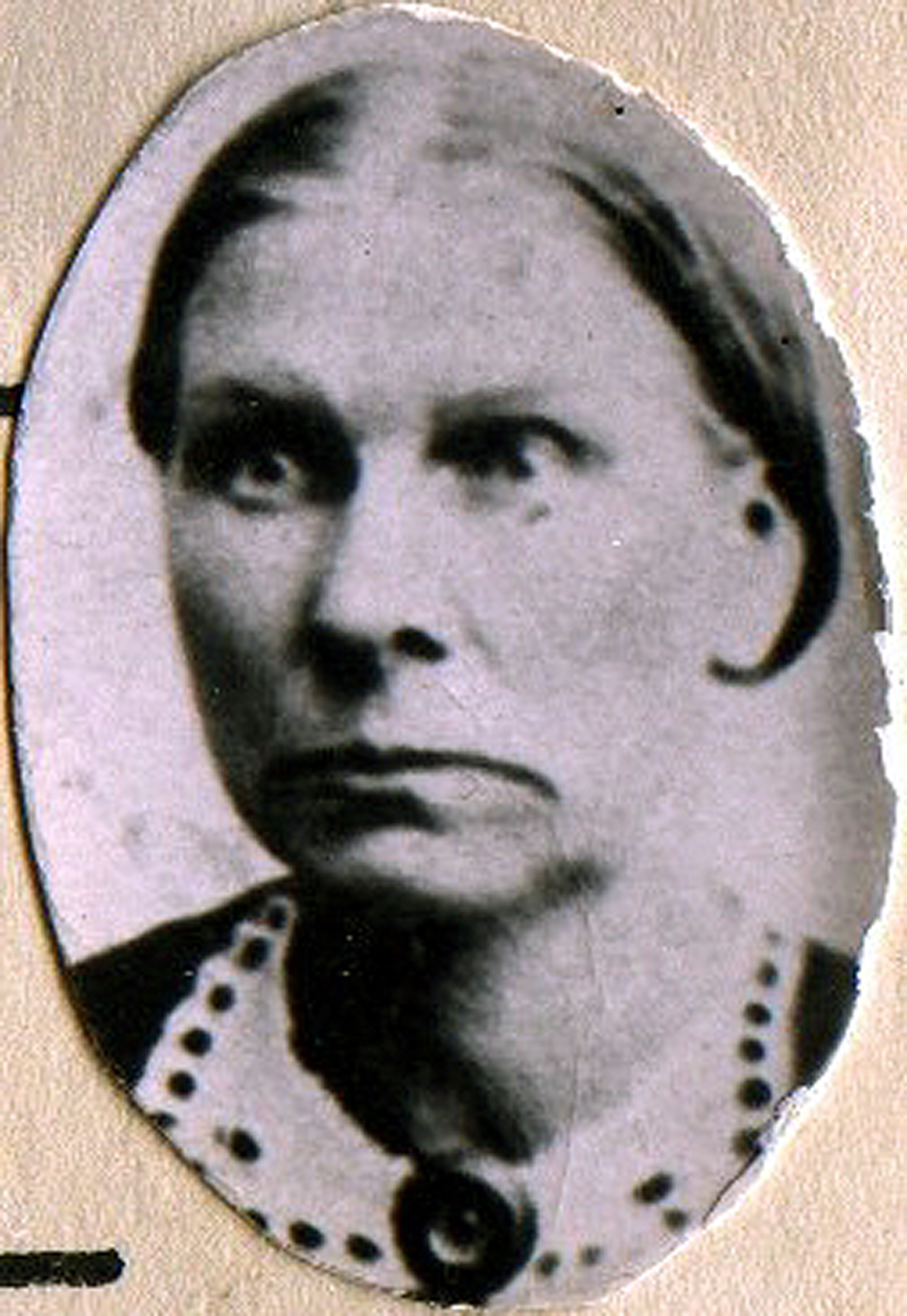 Martha Eynon Hunt
Martha Eynon Hunt
We do know that about a year later, March 5, 1851 Daniel D and Martha were sealed in a live sealing ordinance in Salt Lake City, either in the Endowment House, or the President's Office.(PO) More history about the Hunts and Eynons are to be found in the Wilkes Epic. Many of us are familiar with two of the children of Daniel's and his first wife, Susan's. They are John Hunt, who was in charge of the Hunt Wagon Train that accompanied the Martin and Willy Handcart Companies, and his brother James A. Hunt, who was sent by Brigham Young with a group of men to the Elk Mountain Mission. They built a fort and worked with the Indians there. James was killed by one of the Indians after being shot in the back. Chapters Six, Seven and Eight of the Wilkes Epic contain much more of these very important and interesting stories.
I found the following exerpt from Elijah Averett's autobiography in the Overland Travel site, 1847-1868:
In the spring of 1851 [1850], br. Hyde and James Allred[,] Sen[i]or organized a company. Br. Aaron Johnson was Captain of the hundred and I was Captain of the first fifty and Mathew Caldwell of the second fifty. After we were organized Captain Blair and his Company of gentiles joined me and my Company, making (84) eighty four wagons in my Company.
We crossed the Mis[s]ouri River and struck out for the mountains. We traveled on until we crossed a little river by the name of Salt River. Here, if I recollect right, the cholery [cholera] struck our Camp. I lost 17 persons in my company. I had a touch of it myself. We traveled on and kept above Fort Carney (Fort Kernay) [Kearney].
We felt that the cholery had ought to stop and brs. Johnson, Hunt, (Daniel D.) [Isaac] Hill and myself went out in the prarie and prayed that the Lord would stop the Cholery, and we had a testimony that it would stop. (They heard a stamping in the grass near by, but nothing was to be seen.) We never had another case in our Company. We saw a great many gentile graves on the road. The cholera had Slayed them terribly. There was wagons, tires, clothing, guns, bedding, boots and shoes scattered along the road. We got along very well. There was one buffalo run through our camp and the dogs caught him and the boys shot him[.] It rained pretty hard on us, and in crossing the North Platt[e] some of our wagons swam, but we got across all right.
After this we had one young man lost one night and part of two days, but he came to camp all right. Nothing else happened that I recollect of worth mentioning of. I only lost two head of cattle in my company.
When we arrived at Salt Lake City my Company was disbanded and went where ever they wanted to. I was Counciled by President Brigham Young to go to San Pete County Utah.
It is from another source that we find a list of names of those seventeen who died, and find the name of Daniel D. Hunt's second wife, Susan Hunt:
From the Valley.
Mr. Lorenzo Johnson, of this place, received a letter, dated G. S. L. City, Oct. 15th, 1850, from Bishop Aaron Johnson, his brother, who left this section last spring with a company of 135 wagons; and in the letter he solicits his brother to have the names published of those who died in his company on the way, believing that it might afford some satisfaction to their friends at this place, or wherever they may at present reside. The names copied from the letter are as follows:
John Shipley, Willis K. Johnson, Adalad Redfield, Thomas Kirk, Ruth Ann Kington, Abel Sargeant, Thomas Sargeant, Alonzo Russell, Polly Z. Johnson, Susan Hunt, Son of Elijah Pond, Eliza Hill, Lester Russell, Sarah M. Johnson, Margaret McDougal Sister Ritchie, Sister Browitt, and a gold digger.
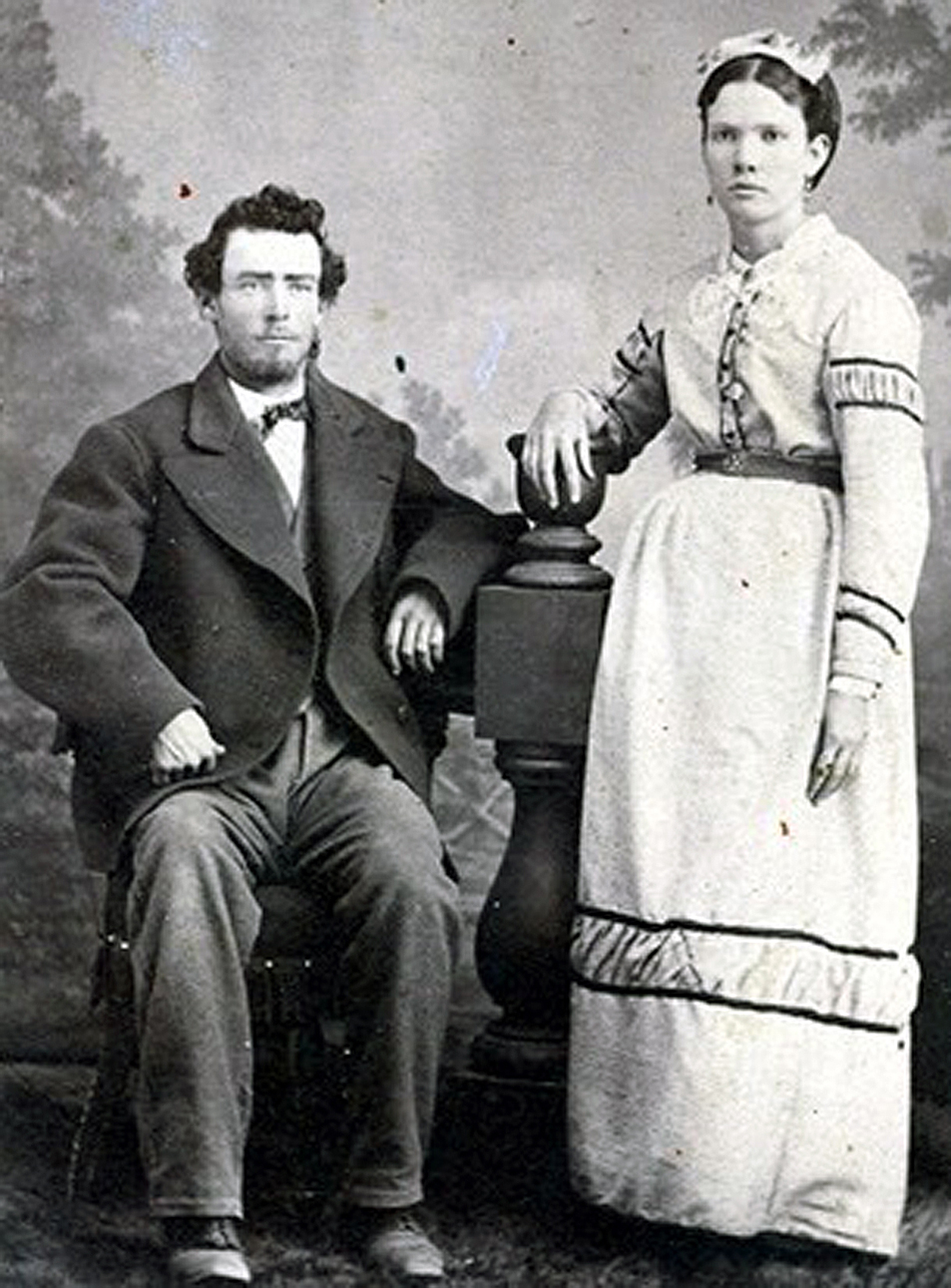 John Wilkes & Martha Hunt
John Wilkes & Martha Hunt
John's mother Elizabeth Haines Wilkes died August 7, 1878, leaving her husband William alone in St. Charles. Later William married a widow name Jacobine Hemmert.
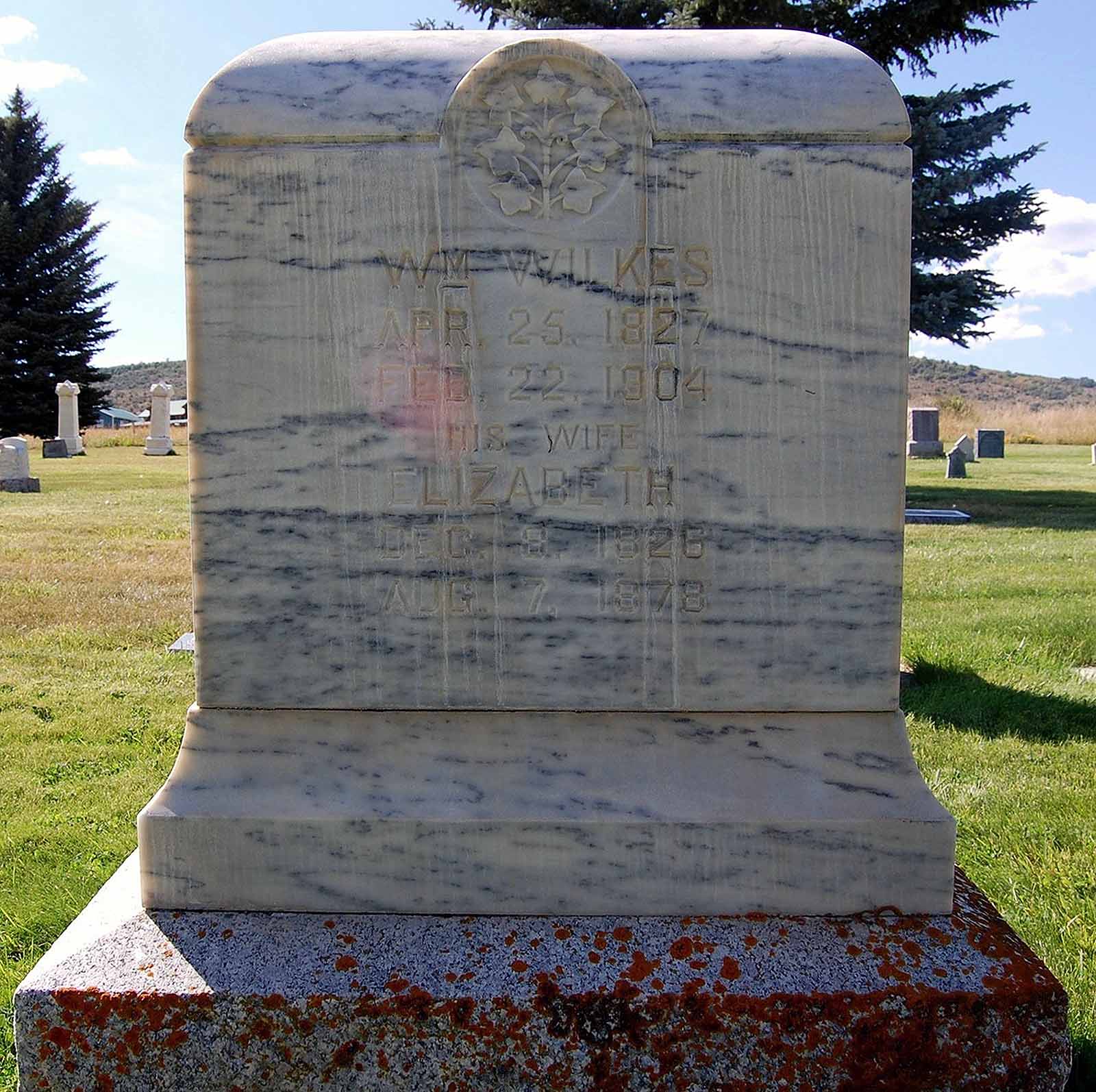 William Wilkes and Elizabeth Haines tombstone in St. Charles, Idaho
William Wilkes and Elizabeth Haines tombstone in St. Charles, Idaho
While living in St. Charles, the following children were born to Daniel D. and Martha...Mormon Brigham, Abel Moroni, Gashum Alma, our ancestor Martha Elizabeth, Abraham and Charlotte. A particularly heartbreaking story of this youngest sister, Charlotte, is told in chapter 8 of the Wilkes Epic. She married a William Beers and moved from St. Charles to Manassa, Colorado, leaving her widowed mother, Martha Eynon Hunt. These two had been particularly close, and the separation was very difficult for each of them. Charlotte was very homesick, and repeatedly wrote to her mother that she would be returning for a visit. However, before she could, she passed away at the birth of her first baby, also named Charlotte, in 1881. Her letters to her mother, and the lock of her hair sent to her mother after her death, are now in my possession. Her older sister, my generation's 2nd Great Grandmother, Martha Elizabeth, had met and married John Wilkes after a long trip by wagon to the Endowment House in Salt Lake City. They started married life bravely because of his disability after being crippled by polio. She would have known that she would have to take on responsibility to do many of the things he physically wouldn't be able to do.
John, Martha and others learned of a valley across the mountains from St. Charles where they would be able to get free land of their own due to the Homestead Act. Conflicting dates of either 1879 or 1880 tell how John, Martha, and two or three children, along with Martha's brothers, Moroni and Gash (Gashum)Hunt, arrived in the valley, and built three cabins, supposedly the first there in the area, on the south side of Swift Creek at the foot of the east mountains. Family lore states that John Wilkes planted the first garden in the area.
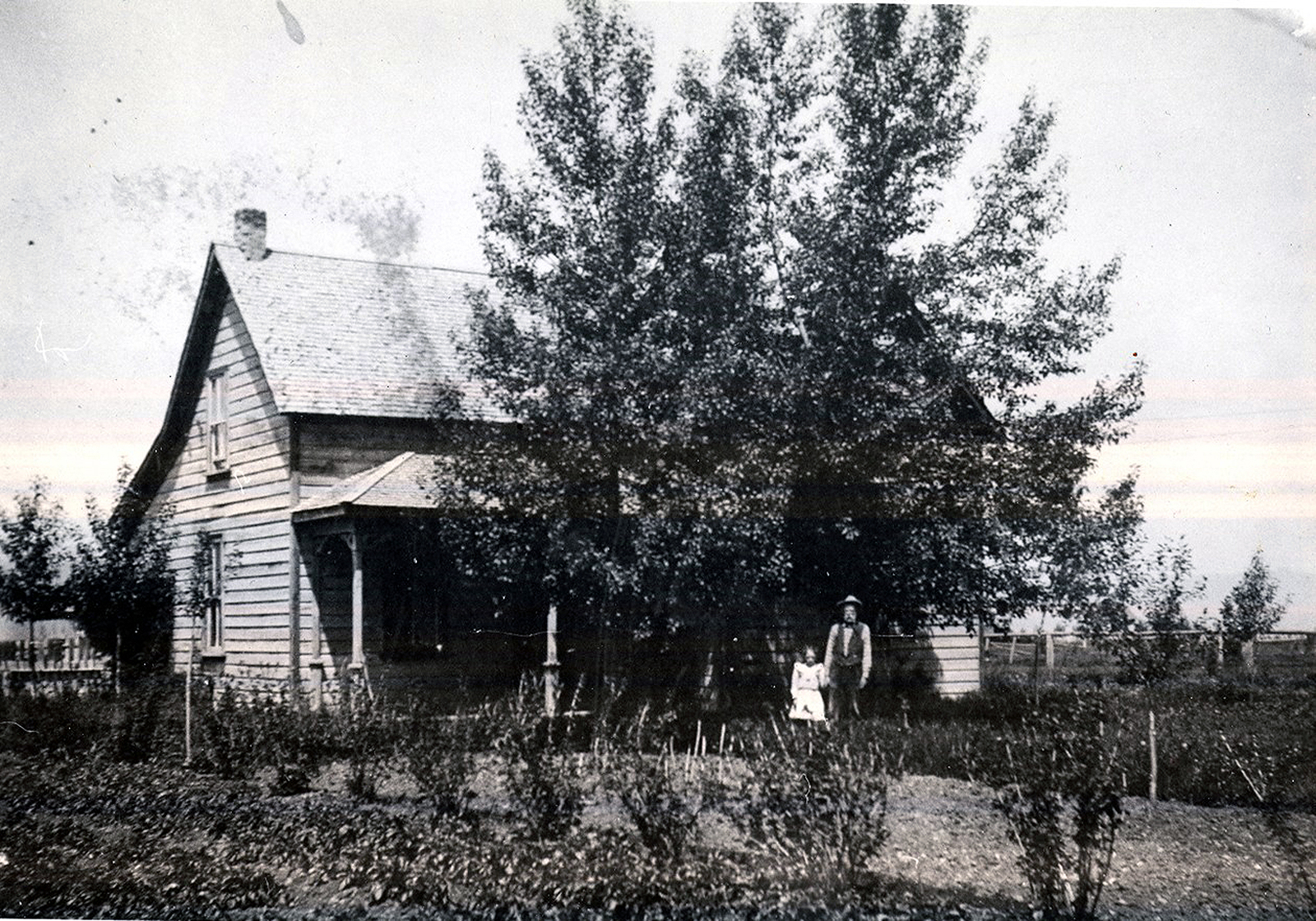
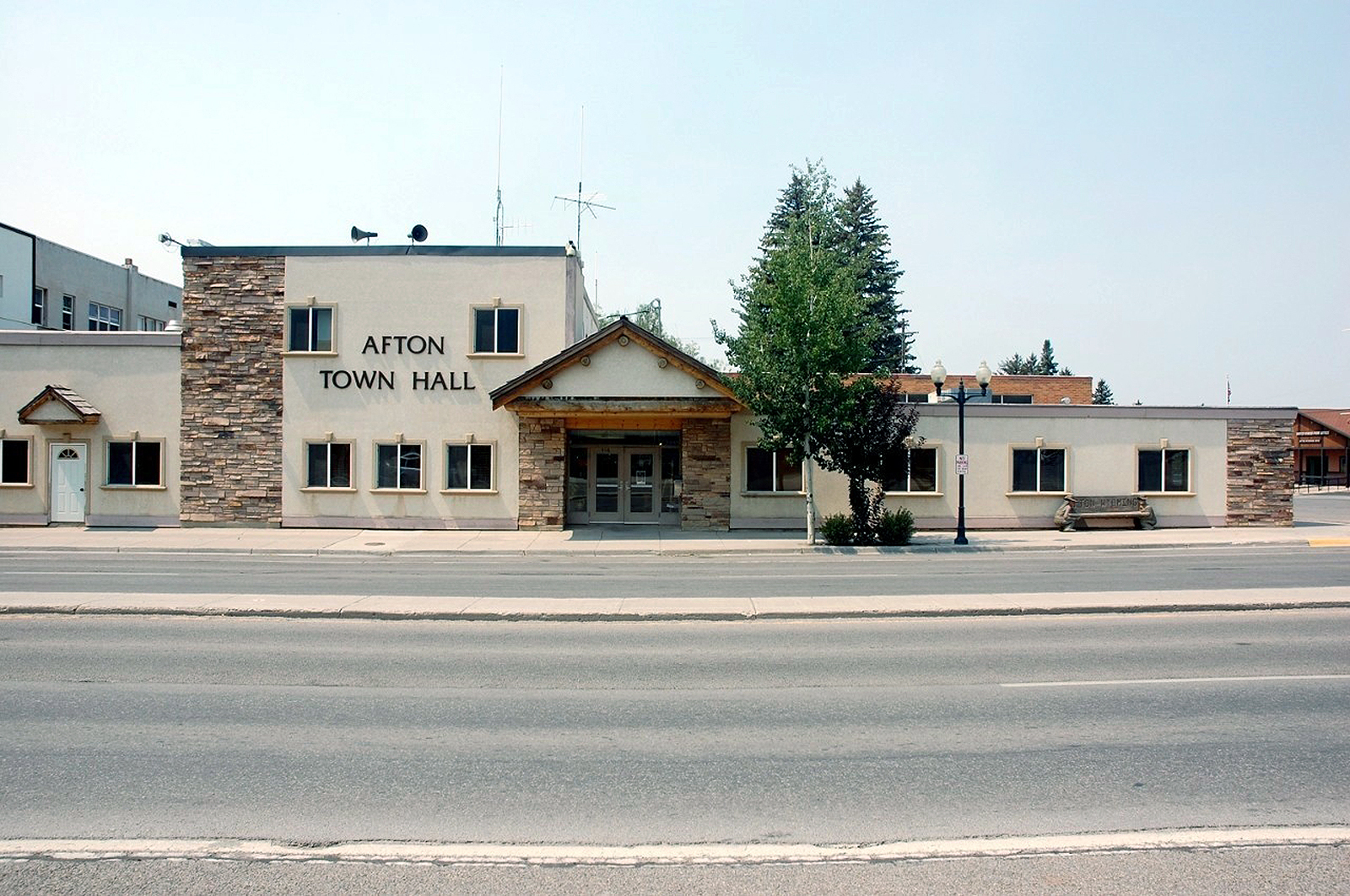
Tragedy struck, however, when the Wilkes' two or three horses were fatally poisoned from licking a mixture of sand, lime and perhaps sulphur, mixed into an old copper boiler, to be used as mortar between the cabins' logs. Apparently, the chemical reaction of those minerals combined with the copper in the boiler, turned the mixture poisonous. Without these animals, there was no way John and Martha could continue on, so on his only surviving horse, or a borrowed one, he left his family and returned to St. Charles to borrow a team and wagon to transport his family back. They stayed in St. Charles for a few years, and then returned to Star Valley, to the small settlement of Afton which had built up around where they had first settled.
They apparently moved back into their old cabin while a new home was being built on 160 acres homestead, two miles west of Afton. Their children born while in St. Charles were John Daniel (Johnnie), Martha Elizabeth (Mattie), William Edmond (Ed) Charlotte Ann (Lottie), our Grandma Hettie, and Benoni Gashum Moroni (Noen) Three more children were born after they arrived back in Afton...Sarah Leola (Lola), Nettie Viola (Nettie)who passed away in Afton at the age of five, and Mabel Luella (Mabel).
They undoubtedly worked hard, with the children having to help out more than usual because of their father's disability. In 1893, five acres were purchased for $13.00 in town, where they built a home. This home was on the corner of the main street in town (Washington) and 4th Avenue. Their acreage went from the corner where the city offices are today, to the now famous arch of antlers that cross the street. There, because of financial necessity, they opened their home which became known as the Cottage Hotel, to various lodgers, and John was able to get work at the Burton Brother's Store across the street.
Great sadness came to the family, when their oldest son, John Daniel, who had married Luella Child, passed away suddenly, leaving her with three small children. He was buried in the Afton Cemetery. John and Martha provided part of their five acres for Luella to build a home, and she went to work at Burton's Store to provide for herself and children, two of which tragically passed away as well, and joined their father in the cemetery. All of us older ones remember that after many years of being a widow, Luella married our Grandpa Thomas Blacker, after his wife Hettie passed away. We always knew her as Aunt Luella.
Sadly, it seemed that John Wilkes suffered from a terrible struggle with alcohol, perhaps which might have eased the effects due to physical suffering from his crippled body. He became unable to work much, and the burden of the family support rested more and more on his wife Martha and their children. It took a lot of work to provide meals, laundry, clean beds and rooms for the men who lodged at their home. Probably due to the fact that the children were needed to help at home, their schooling was limited. Grandma Blacker (Hettie) was only able to attend school through the fourth grade. She and one of her sisters had to share one nice dress, for a period of time, and take turns going to social events.
 Edward Blacker
Edward Blacker
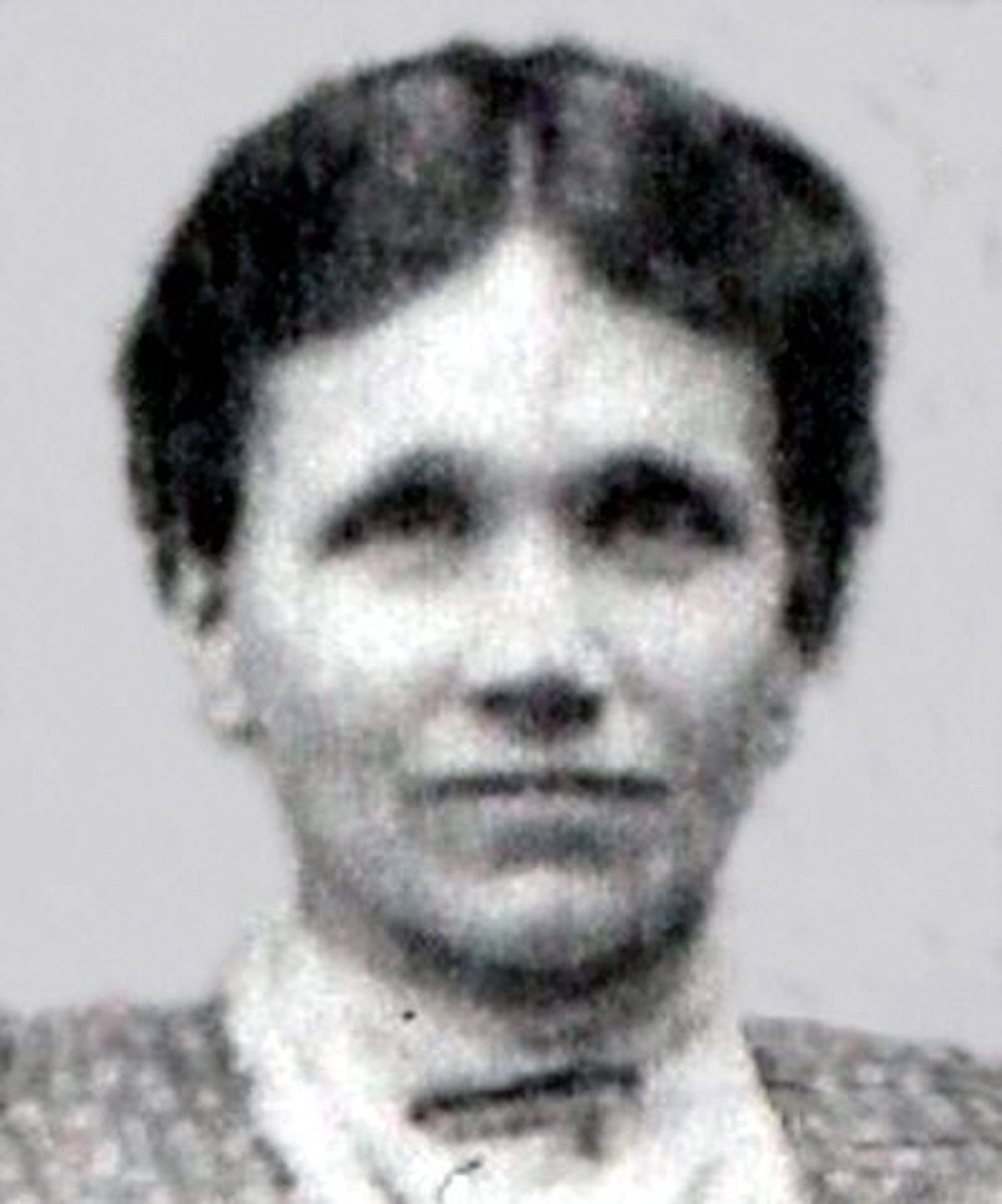 Althera Loveday
Althera Loveday
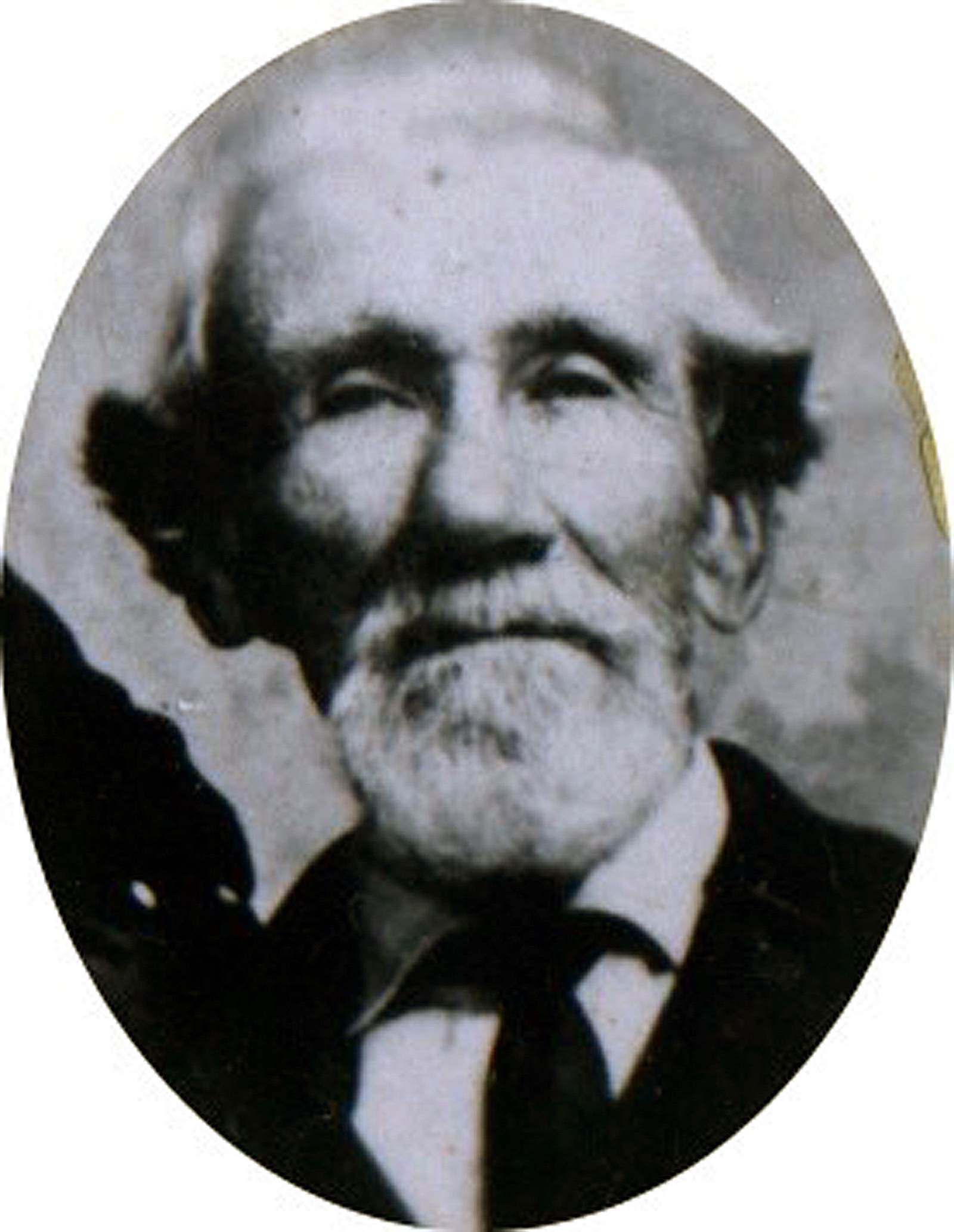 Isaac Loveday
Isaac Loveday
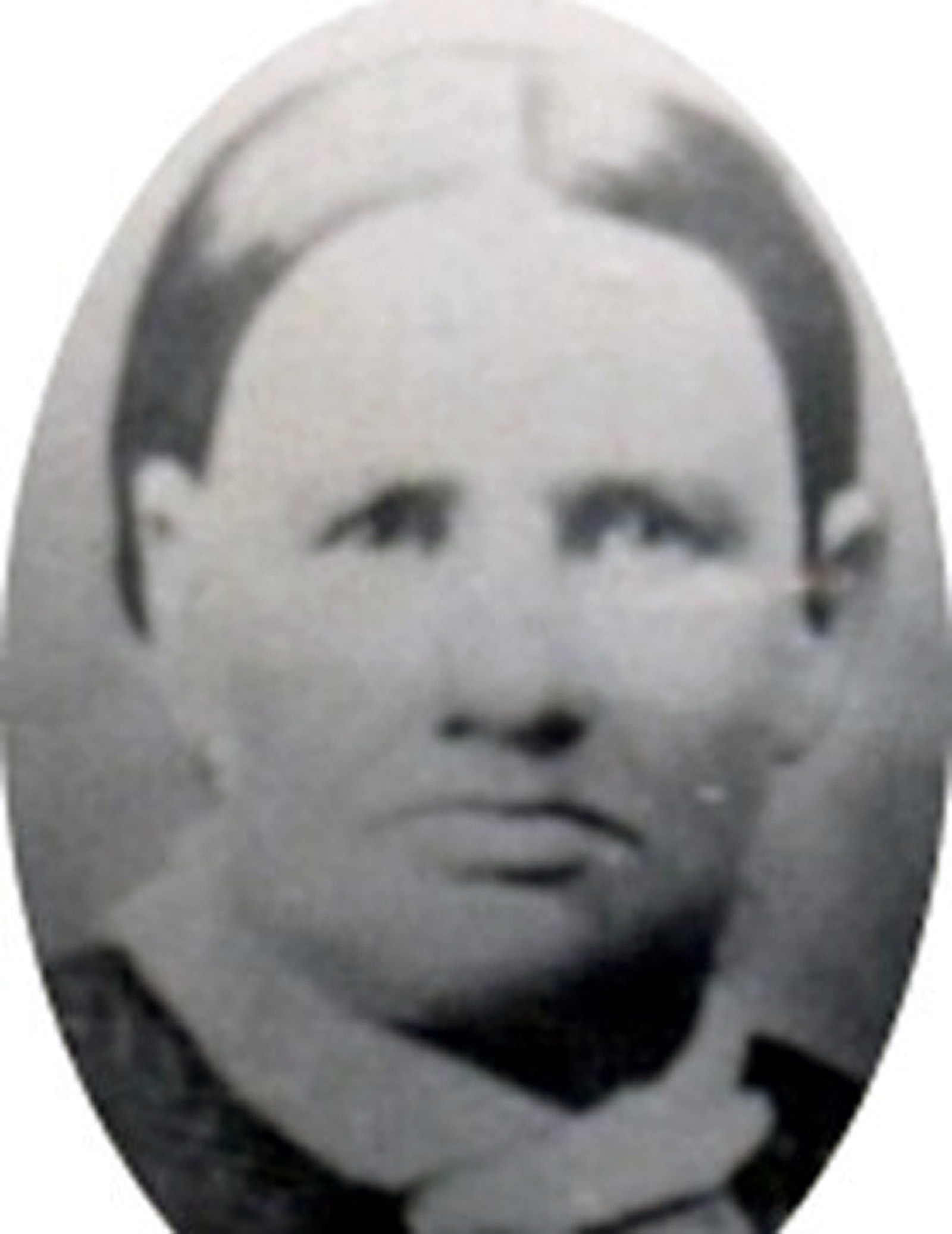 Mary Danks
Mary Danks
Now that we have the story of how the Wilkes's arrived in Afton, we will go back in time to England to find our Blacker ancestors. On the 18th of July, 1841, in Bristol, England, John Blacker and Maria Gould were married.(Mention might be made of the tradition in the Blacker families, that the name "Maria", is pronounced with a long "i" sound) Their sixth child, Edward, was our direct ancestor, and was born Sept 10,1851 in Cwmtillery, (Coom-till-ARY) after the family moved from England to Wales, continuing to work in the coal mining industry. At times, Monmouthshire, the county in which he was born, was claimed by England, but at other times, as part of Wales, hence the confusion as to the country of his birth. Eventually, the family moved to Mountain Ash, Wales, where Edward met and fell in love with a young lady by the name of Merintha Althera Loveday
Althera's parents, Isaac Loveday and Mary Danks, had married in Pontypool, Wales, the 5th of August 1849. Althera was the second of their seven children, born Jan 3, 1852 in Pontypool, and would have been around thirteen years of age, when she with her family moved to Mountain Ash, where her father and brothers found work in the coal mines. An interesting question arises, as to the languages spoken in this family. Isaac was born in England, moving as a young man to Pontypool, and would have spoken English, but Althera's mother, Mary, had been born in Wales, as was her grandmother, and they probably spoke Welsh. We don't know whether or not they also spoke English, but it is an interesting idea to consider.
The LDS Church had sent missionaries to the British Isles in 1837, and a branch was formed in Pontypool, where Isaac Loveday and the Danks family lived and joined the church. They were members when they moved to Mountain Ash, and Mormon church meetings were held in their home, #16 Cliff St., just across the street and up a short distance from where Althera and Edward lived after their marriage, at #7 Cliff Street.
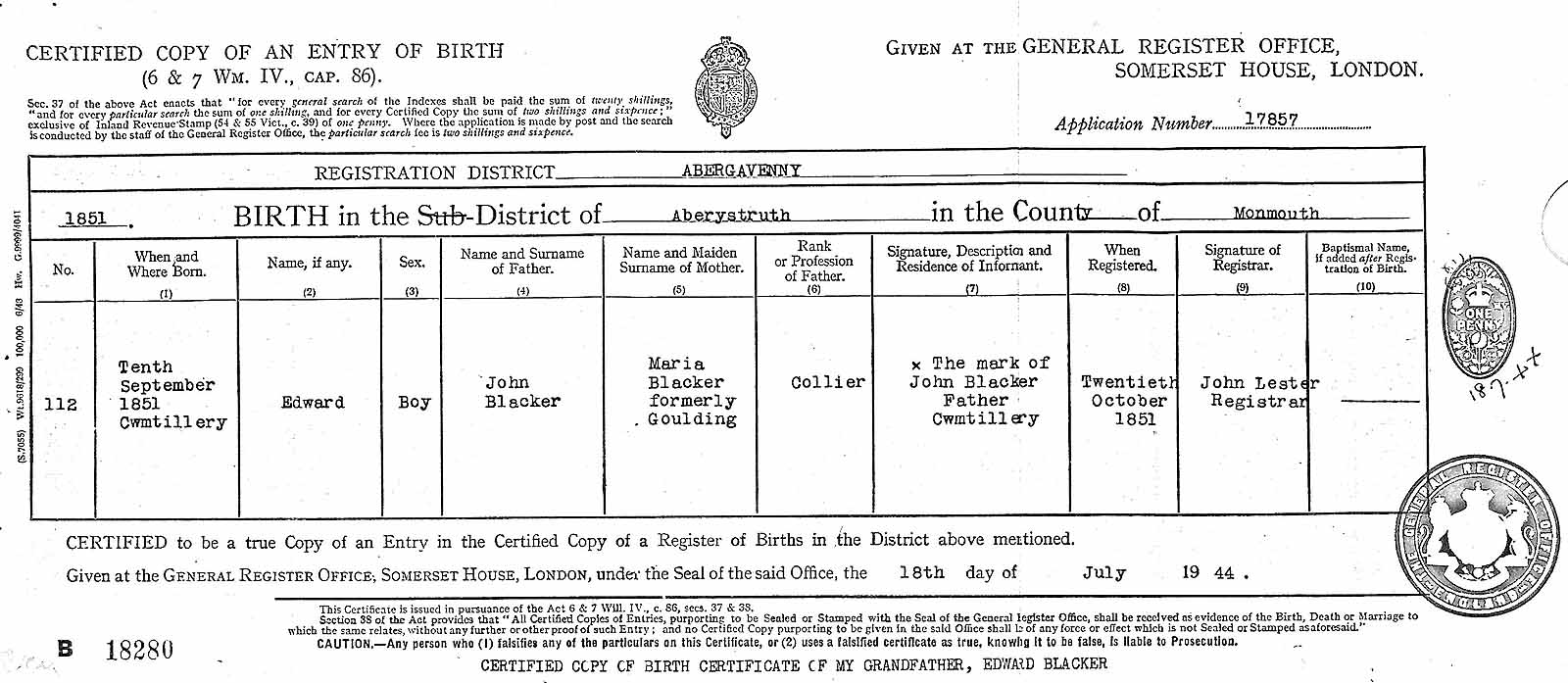
Edward and Althera were married in the church of St. David's in Mountain Ash Oct 27, 1873. (That church is no longer standing, but the row houses, including #16 and #7 have been updated and are still being lived in. With only a very few LDS members in Mountain Ash, there were perhaps very few, if any, young men of Althera's age; but the fact is that she married Edward, who was not LDS, nor were any of his family. Soon their home was blessed with Edward George, Sarah Ann, and Mary, all of whom were born in Mountain Ash.
After Mary's birth on November 18, 1878 and before December 2, 1879 they moved into Ystradyfodwg(E-straw-dee-FAW-doog) Parish about 3.5 miles west of Mountain Ash where their next child, Thomas my grandfather was born. Grandfather always thought that he was born December 2, 1880 in Ferndale. However a certified copy of his birth obtained after his death shows that his mother reported his birth as being on December 2, 1879 at #5 Union Street in Ystradyfodwg. Althera must not have been able to write at this time, because she signed the birth entry with an "X". The 1881 Wales census also shows them as living on Union Street in Yastradyfodwg. Since Yastradyfodwg is a parish not a town, this is confusing. There is a Union Street in a village called Ferndale, which is in the Ystradyfodwg Parish so they must have lived there.
Due to economic problems in England, it was decided that by moving to the United States, the family could get their own land, and build a better future. It was decided that Edward, along with his older brother, John, John's wife, Margaret and Althera's brother Kemuel Loveday, would sail to the United States to prepare the way for their families to follow. They sailed from Liverpool on the "SS Spain" and arrived in New York on 13 June 1881. From there thye went to Pennsylvania, where work in coal mines was found. On 8 Febuary 1882, Althera with her four children, her parents, Isaac and Mary Danks Loveday, and their son, Isaac, in New York on the ship "Arizona" . Althera's four children were, Edward George, Sarah Ann, Mary, and Thomas.
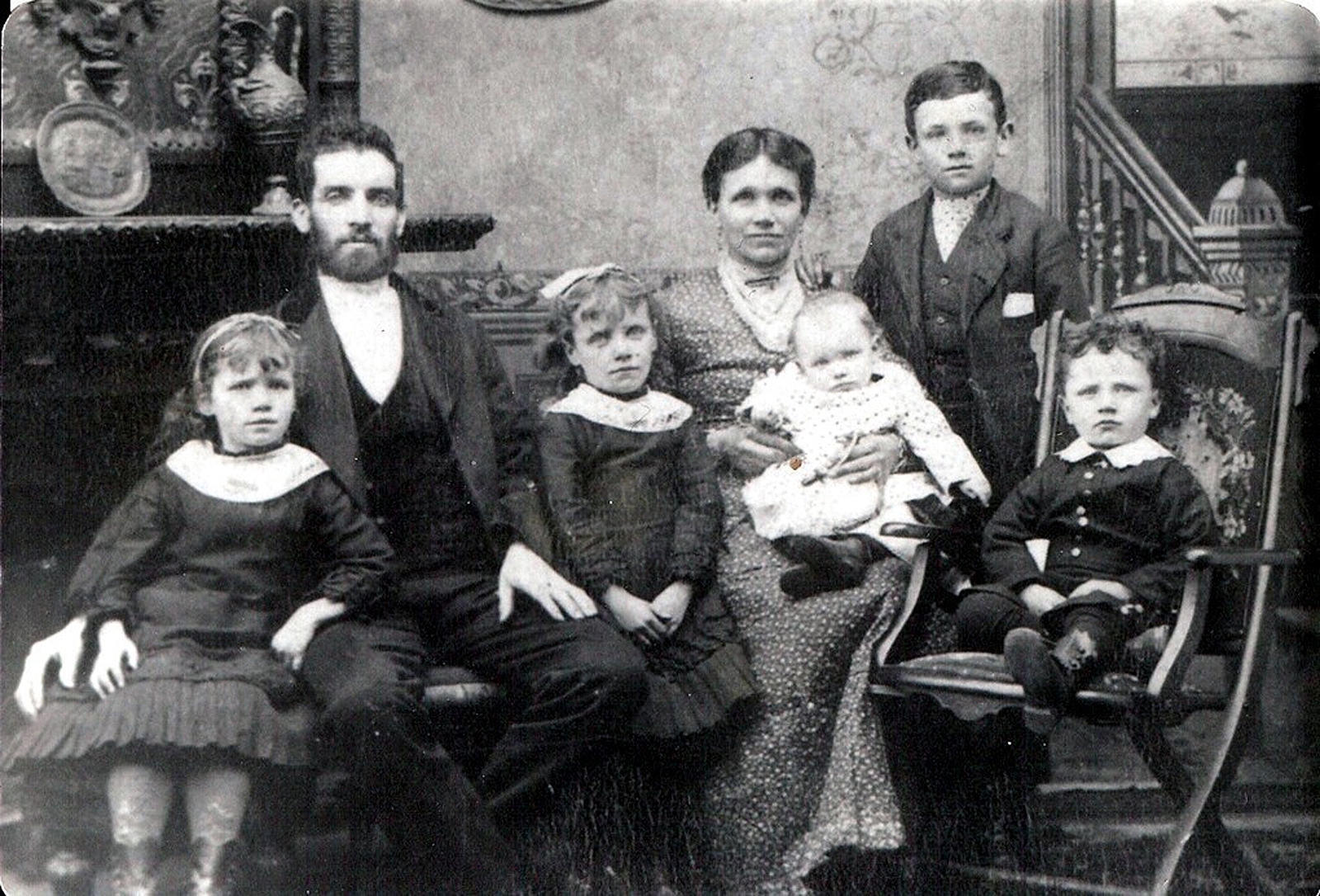 This picture of the Edward and Althera Blacker family was taken while they
were stopping Streator, Illinois on their way to Wyoming from England. From
left to right : Sarah Ann, Edward, Mary, Merintha Althera with baby Maria,
George standing and Thomas in chair
This picture of the Edward and Althera Blacker family was taken while they
were stopping Streator, Illinois on their way to Wyoming from England. From
left to right : Sarah Ann, Edward, Mary, Merintha Althera with baby Maria,
George standing and Thomas in chair
We're not certain as to where and when they actually reunited, but on May 25,1883, a daughter, Maria,(long i) was born to Edward and Althera in Streator, Illinois, as they were gradually working their way toward the west. Somewhere between New York and Wyoming, Edward's brother John, his wife, Margaret, and Althera's brother Kemuel decided to not continue with the others.
Our family traveled by train to a small mining community just a few miles outside of Evanston, Wyoming, known as Almy. There, three families took up residence where the old steel bridge crosses the Bear River, which is not much more than a stream at that point. This would have been sometime after Maria was born in Streator, and before Isaac, their next child was born Oct 12, 1884 in Almy. Isaac and Mary Loveday lived in one home, Edward and Althera near them, and another of Althera's brothers, Hyrum Loveday lived with his family just across the river. Edward and oldest son, George joined the other men and boys working in the coal mines to provide coal for the Union Pacific Railroad.
Edward was a respected person in the community, and at one point was elected as a councilman for Uinta County. In a Uinta County history book, we read that early Almy established a community center, or lodge called the Temple of Honor Hall, which was the center of social life in Almy in competition with the local saloons. Among the several leaders of this lodge in which there were forty members, was our own, Edward Blacker.

During the next few years,the family increased with the births of Isaac, Merintha, Hyrum and Fannie. Sadly, little Isaac had died when about two years of age, and was buried in the small Almy Cemetery. (Interestingly, this cemetery was started on the property of my mother's grandfather, Adin Ebed Brown, upon the death of their little daughter, Maude Mary Brown)
Mining was a very dangerous occupation, due to the coal dust causing black lung disease, the possibility of cave-ins, and the constant danger of combustion of the highly flammable gases that would build up underground. Almy, with several mines dug along the red hills, suffered its share of disasters. The worst, the explosion of #5 mine on March 20, 1895, killed sixty-two men and boys while the Blackers and Lovedays were in the area, though working in different mines. This was probably one of the reasons that the Blackers decided to try to leave mining, and to improve their situation elsewhere. Families of some thirty of the dead attended the mass funeral at the LDS Church in Almy. The Church had sent Apostle Joseph F. Smith and others to preside over the sorrowful occasion. Many of the dead were buried in the Almy Cemetery. My great-great grandfather, Adin Ebed Brown's brother, James was killed, leaving a young wife and several children. The Browns were my mother's family, who were also living in Almy at the time.
Edward in his capacity as a County Commissioner, along with another commissioner, traveled the seventy-five miles over the mountains by wagon to handle some official business in the small community of Afton, Wyoming. He was impressed with the lovely little valley, and after returning home and discussing the possibility of making a life-changing move, it was decided that they would leave coal mining and move to Afton at a future date.
They left their home and traveled with wagon and team as far as Randolph, Utah, some thirty miles away,but had to return to Almy for the winter of 1895-6, due to the illness of 4-year old Hyrum. Greatly disappointed, and with most of their furniture and clothing having been sent ahead with friends, Archiso Corsi and Archie Moffat, they returned back to their old home which their son, George and his new wife, Mary Bailey (Polly) had just moved into. Also married was their daughter, Sarah Ann, who married Uncle Arch Nisbett, who would not be going to Afton with the family. Edward's and Althera's daughter, Mary, who had been living for several years with her grandparents, the Lovedays, to assist them in their advancing ages, also remained in Almy. At this time she would have been about eighteen years of age. This was a great concern to her parents, and we can only wonder about her feelings as most of her family moved away.
In April they again began the trip, having great difficulty because of snow in the mountains. At one point, the horses got stuck in a deep snow bank, stopping all progress of their continuing on with the sleigh. They left everything, including the trapped horses, and walked on foot for many hours until coming to a home, where they were taken in. The man carrying the mail who came along after them, picked up their bedding and grub box which he delivered to where they were staying. He sent men from Afton back to rescue the team, get the sleigh, pick up the family and helped them to their new home. It was 160 acres purchased from a Mr. Stewart for $300. They arrived at the log cabin where their belongings had been delivered the previous fall. There was so much snow, that they had to shovel down to get into the house, a small, two-room place for ten people to call home. They were nearly impoverished, but due to the kindness of a near-by neighbor, Oz (Ozro) Gardener who brought them hay for their horses, and loaned them a cow, they were able to struggle on. They felt they had made a terrible mistake, but there they were. It was 1896. An very interesting interview with Uncle Will, one of their children, conducted by my father in 1965, and found in Chapter 9 of the Blacker Epic, gives more information as to their very difficult move from Almy to Afton.
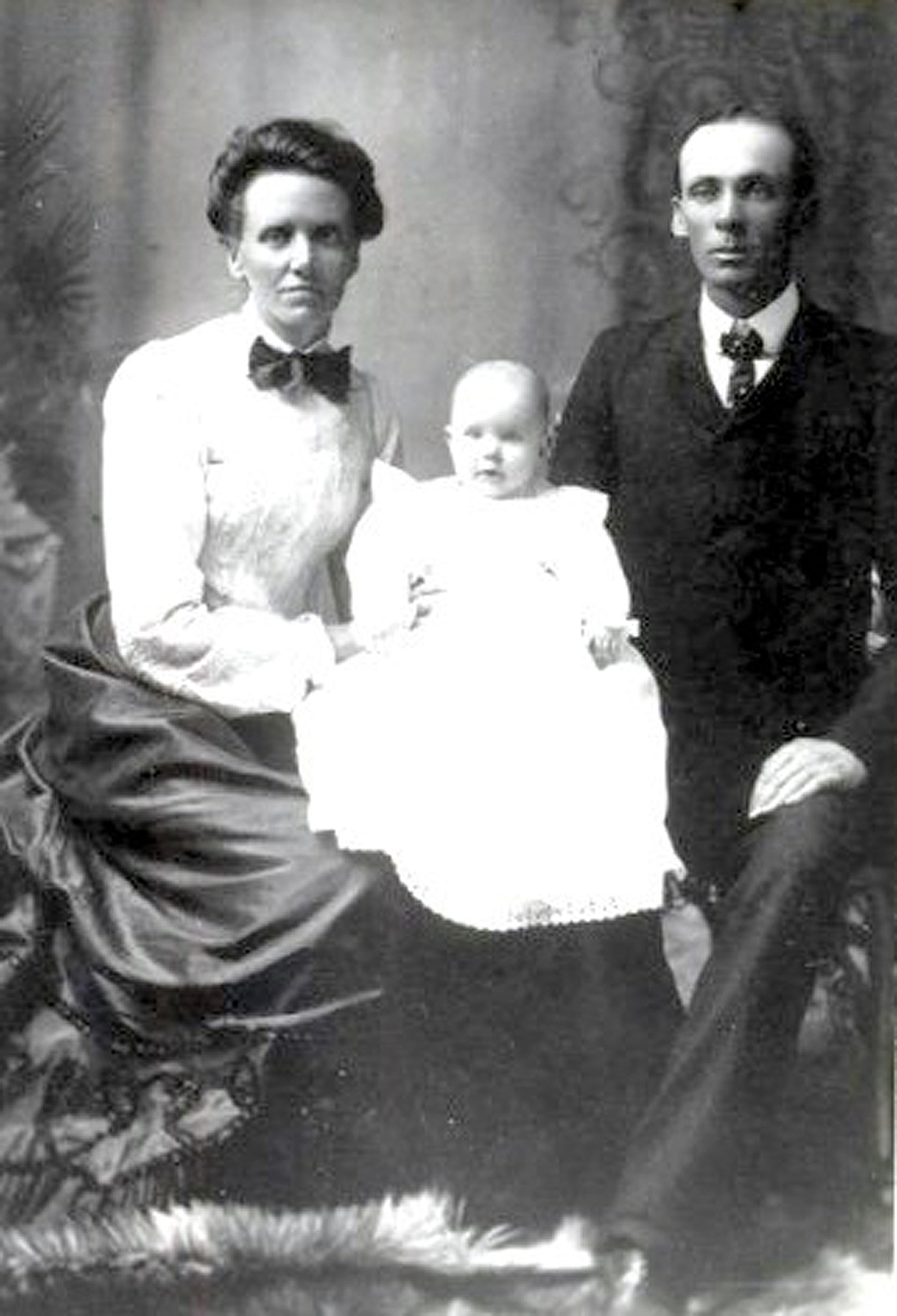 Mary Blacker and Edmond Wilkes with their first child in 1905
Mary Blacker and Edmond Wilkes with their first child in 1905
 Hettie Wilkes and Thomas Blacker with their first child, Thomas LeRoy
Hettie Wilkes and Thomas Blacker with their first child, Thomas LeRoy
Obviously by now, the Blackers and the Wilkes were both living in the same area, and probably attended the same ward. Edward Blacker had eventually followed the example of his wife and children and had been baptized into the Church. As the children of both families grew older, two of the Blacker children married two of the Wilkes. Grandpa Thomas married Hettie Wilkes, on the same day that her brother, William Edmond (Ed) married Thomas's sister Mary Blacker, June 10, 1903 in the Logan Temple, with both young couples settling in Afton. Mary, who had stayed with her grandparents, Isaac and Mary Loveday, when the rest of the family left Almy, came to Afton with Isaac after the death of her grandmother, Mary, who was buried in Almy.
While researching material about the Wilkes and Blackers, I ran across some interesting information concerning an enterprise of one of Hettie's brothers, Benoni (Noan) Wilkes. Because he had homesteaded a place between Montpelier and Star Valley that has been mentioned in the family stories, it might be appropriate to tell about it. He and his wife purchased some land with a small cabin and stable on it, in the hills between the two places where there was good water and a grassy area. Gradually they built up the area to the point where it became a popular place for freighters and travelers to stop overnight. It became known as "The Halfway House". A bunk house about 16'x20'was built with an upper tier of bunks, and a big, kitchen stove in the middle of the room. He added a stable under which he could put 64 head of horses. Shortly after, he built a two story log house where he and his wife catered to the needs of hungry travellers. I will refer to the printed information I found, but can't recall the source of the article...
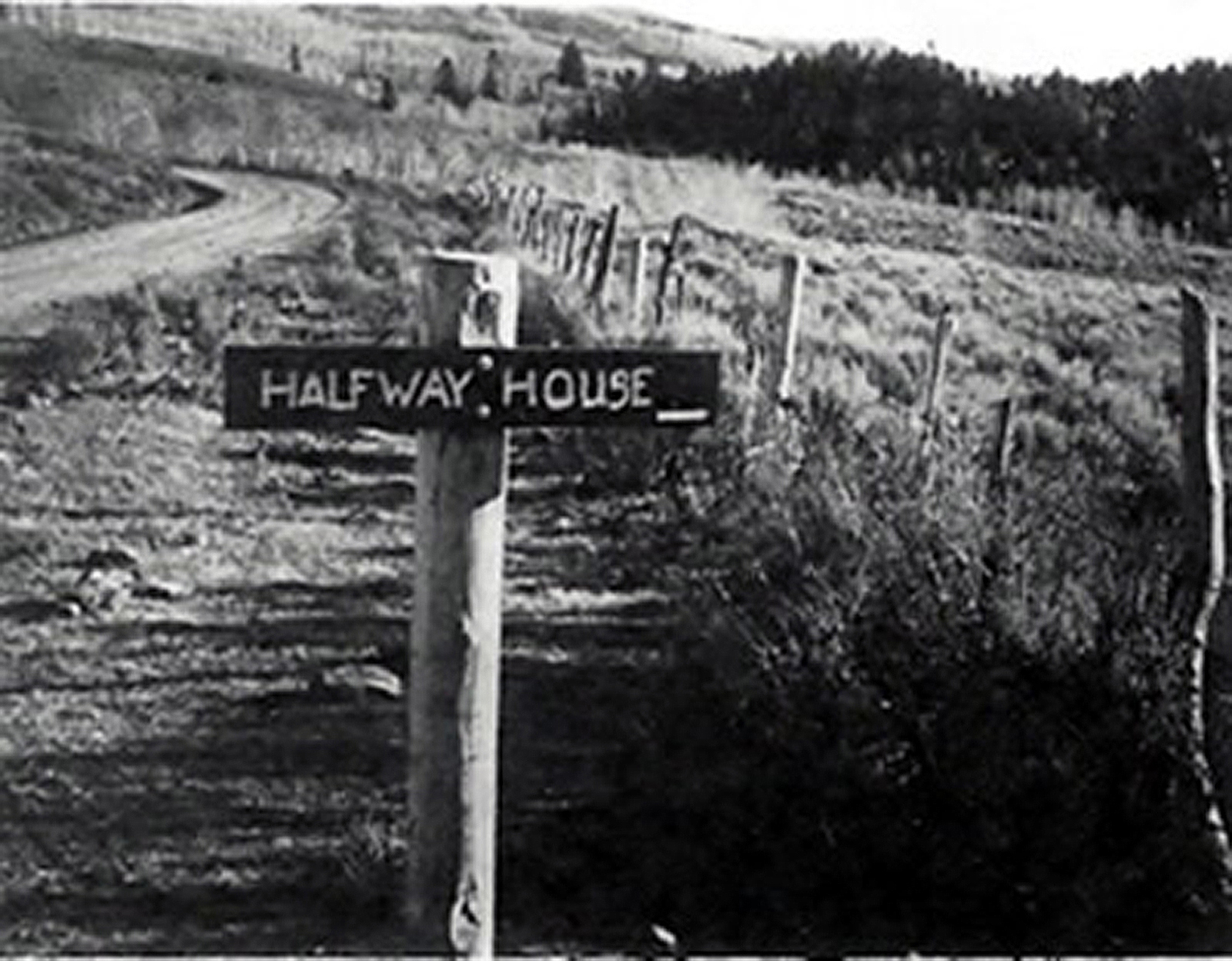
"At the same time, it was common practice for traveling salesmen dubbed drummers, to carry a sample of their wares with them. During peak periods, it was sometimes necessary for the opertors of the stage route to put on an extra rig just to haul the trunks and suit cases of the drummers. Often the main house would be crowded by the passengers who came in on the stages. But more often, it was the barns and stables and bunkhouse that was crowded with freighters and their teams. At such times, it was not unusual to see as many as ten teams standing outside clothed in horse blankets. In the bunk house, it was get there first and pick your place to sleep, or you might have to make your bed in the loft of the barn, as many did. In the morning, it was either get up first, or await your turn to prepare breakfast on the big range. Fry pans and coffee pots literally covered the surface of the stove in the bunkhouse at such times. When the cement was being hauled to build the first high school building in Afton, there was one night when there were 78 head of horses at the Halfway House. It took a long time to get the cooking done that morning. Mr. Wilkes sold the place in 1929 to a Mr. A. L. Dorney. By that time much of the travel was directed elsewhere bringing an end to an era,"
This information was found in a book of local history either in the public library in Afton, or in Evanston, Wyoming. I regret I cannot find the title of the book, nor the name of the author. The following article was published by the Star Valley Historicl Society, giving some additional informtion:
"The Crow Creek Road was the link between the Mormon settlements of Bear Lake and Star Valley for 50 years. The 100 mile round trip between Afton, WY and the railhead at Montpelier ID would take a team of horses from 3 to 7 days depending on the conditions along the way. Road Ranches were set up to help provide for the needs of the freighters and their draft animals no matter what the weather. Nield Ranch to the north, Camp Giveout and Henggi's Dairy to the south, Halfway House in the middle became the biggest and best of all the stations along Crow Creek Road.
In 1912 Benoni (Noen) and Mary (Maime) Wilkes homesteaded 322 acres where cabins had been built by Hale-Tolman with the mail contract, Mr. and Mrs. Tom Ritson, and Charles and Orson Anderson and their wives. Here, Noen Wilkes built Halfway House and a large barn that could house 32 teams and their drivers. This was a haven for freighters, the mail wagon between Afton and Montpelier, and the daily stage coach where travelers could stop for dinner and a change of horses. Maime telephoned Afton daily to find how many guests were on their way so she could provide a family style meal on her wood-burning range. The bunkhouse had a cook stove for those who wished to cook their own meals. A stop at Halfway was a social event that provided a welcome relief from the hard work of a freighters life. Life at the Halfway House for the Wilkes family ended in 1925 when the state highway (convict road) pulled the traffic over Salt Creek Pass further east."
"At the same time, it was common practice for traveling salesmen dubbed drummers, to carry a sample of their wares with them. During peak periods, it was sometimes necessary for the opertors of the stage route to put on an extra rig just to haul the trunks and suit cases of the drummers. Often the main house would be crowded by the passengers who came in on the stages. But more often, it was the barns and stables and bunkhouse that was crowded with freighters and their teams. At such times, it was not unusual to see as many as ten teams standing outside clothed in horse blankets. In the bunk house, it was get there first and pick your place to sleep, or you might have to make your bed in the loft of the barn, as many did. In the morning, it was either get up first, or await your turn to prepare breakfast on the big range. Fry pans and coffee pots literally covered the surface of the stove in the bunkhouse at such times. When the cement was being hauled to build the first high school building in Afton, there was one night when there were 78 head of horses at the Halfway House. It took a long time to get the cooking done that morning. Mr. Wilkes sold the place in 1929 to a Mr. A. L. Dorney. By that time much of the travel was directed elsewhere bringing an end to an era,"
This information was found in a book of local history either in the public library in Afton, or in Evanston, Wyoming. I regret I cannot find the title of the book, nor the name of the author. The following article was published by the Star Valley Historicl Society, giving some additional informtion:
"The Crow Creek Road was the link between the Mormon settlements of Bear Lake and Star Valley for 50 years. The 100 mile round trip between Afton, WY and the railhead at Montpelier ID would take a team of horses from 3 to 7 days depending on the conditions along the way. Road Ranches were set up to help provide for the needs of the freighters and their draft animals no matter what the weather. Nield Ranch to the north, Camp Giveout and Henggi's Dairy to the south, Halfway House in the middle became the biggest and best of all the stations along Crow Creek Road.
In 1912 Benoni (Noen) and Mary (Maime) Wilkes homesteaded 322 acres where cabins had been built by Hale-Tolman with the mail contract, Mr. and Mrs. Tom Ritson, and Charles and Orson Anderson and their wives. Here, Noen Wilkes built Halfway House and a large barn that could house 32 teams and their drivers. This was a haven for freighters, the mail wagon between Afton and Montpelier, and the daily stage coach where travelers could stop for dinner and a change of horses. Maime telephoned Afton daily to find how many guests were on their way so she could provide a family style meal on her wood-burning range. The bunkhouse had a cook stove for those who wished to cook their own meals. A stop at Halfway was a social event that provided a welcome relief from the hard work of a freighters life. Life at the Halfway House for the Wilkes family ended in 1925 when the state highway (convict road) pulled the traffic over Salt Creek Pass further east."
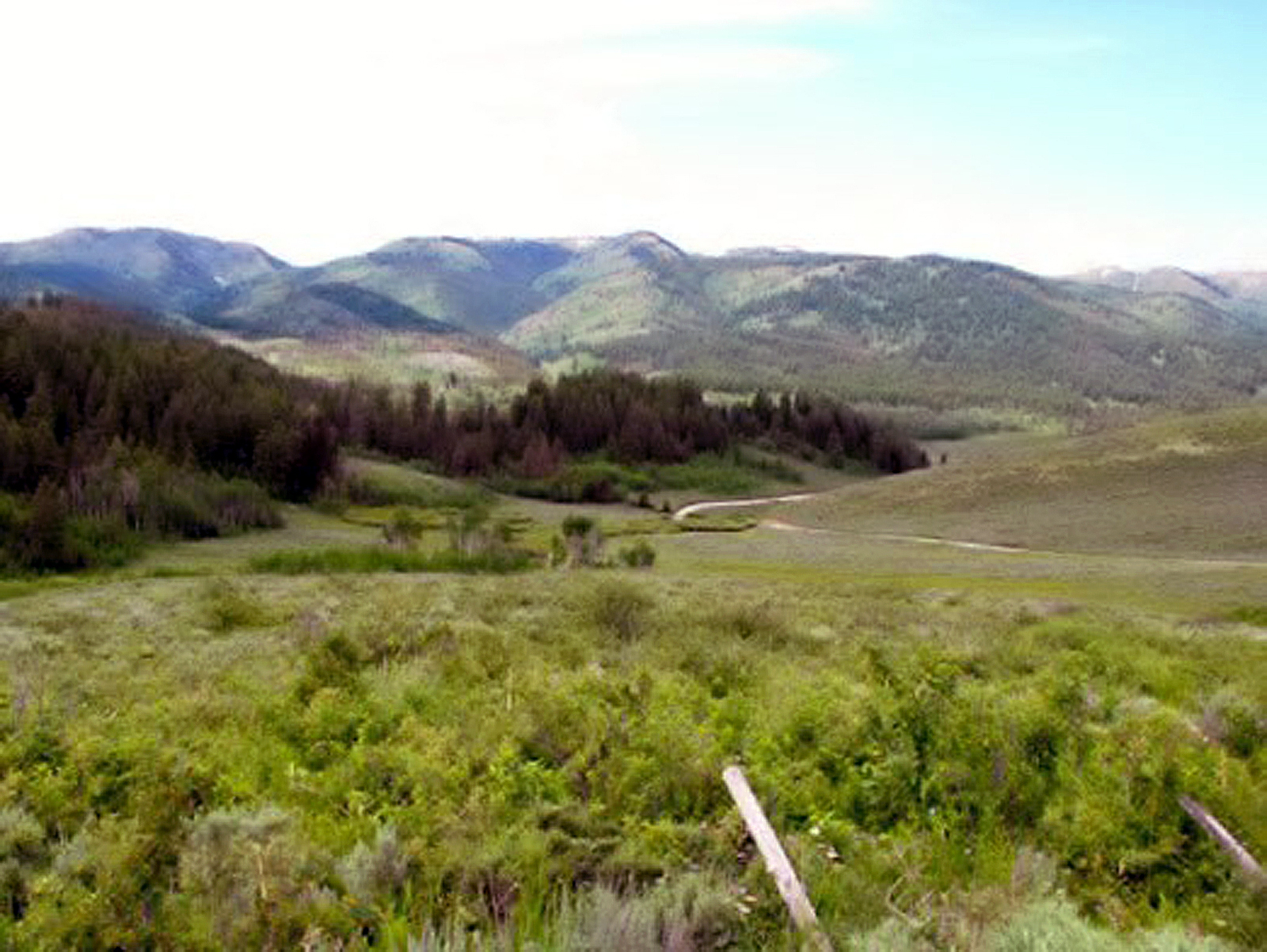
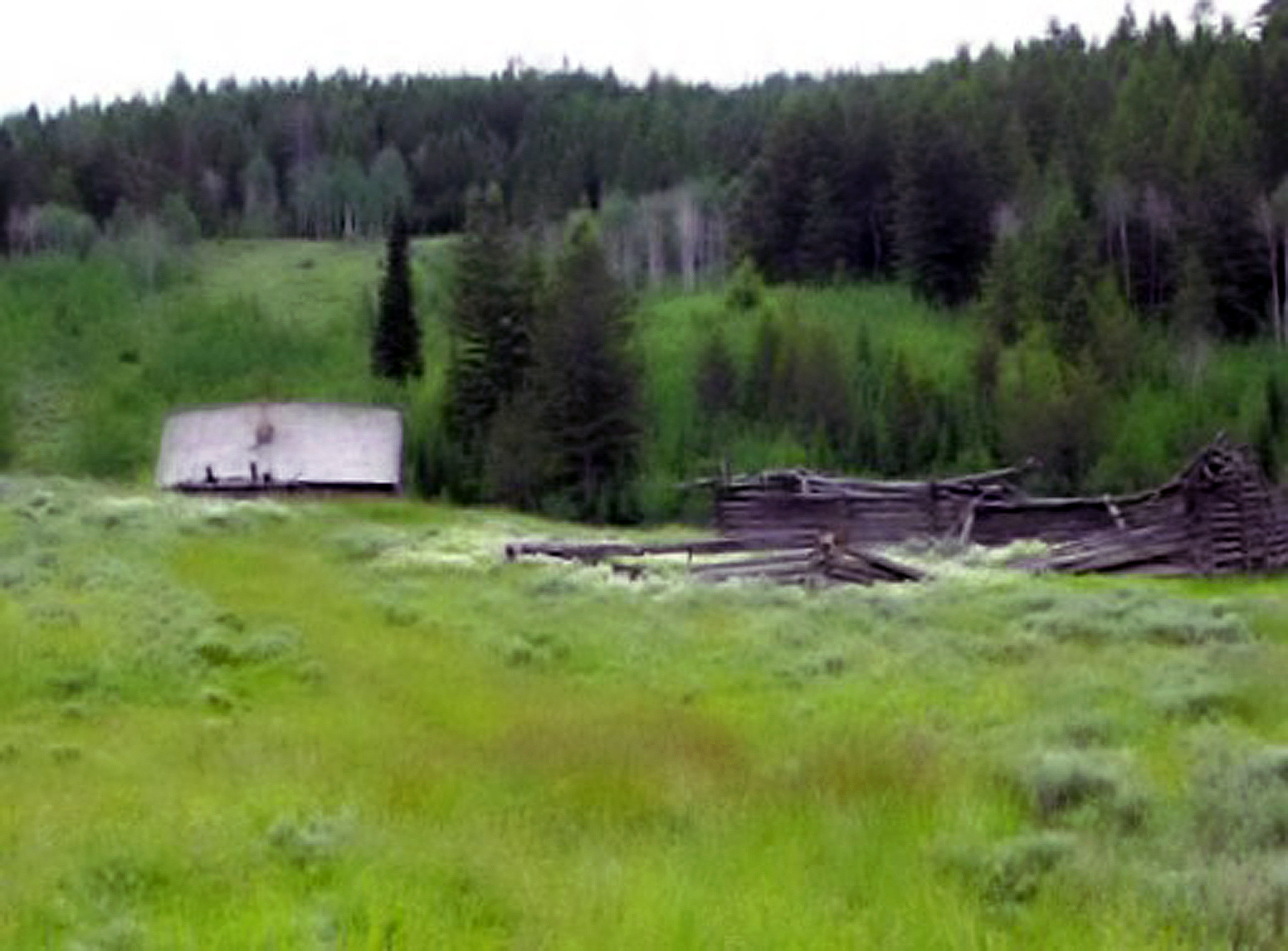
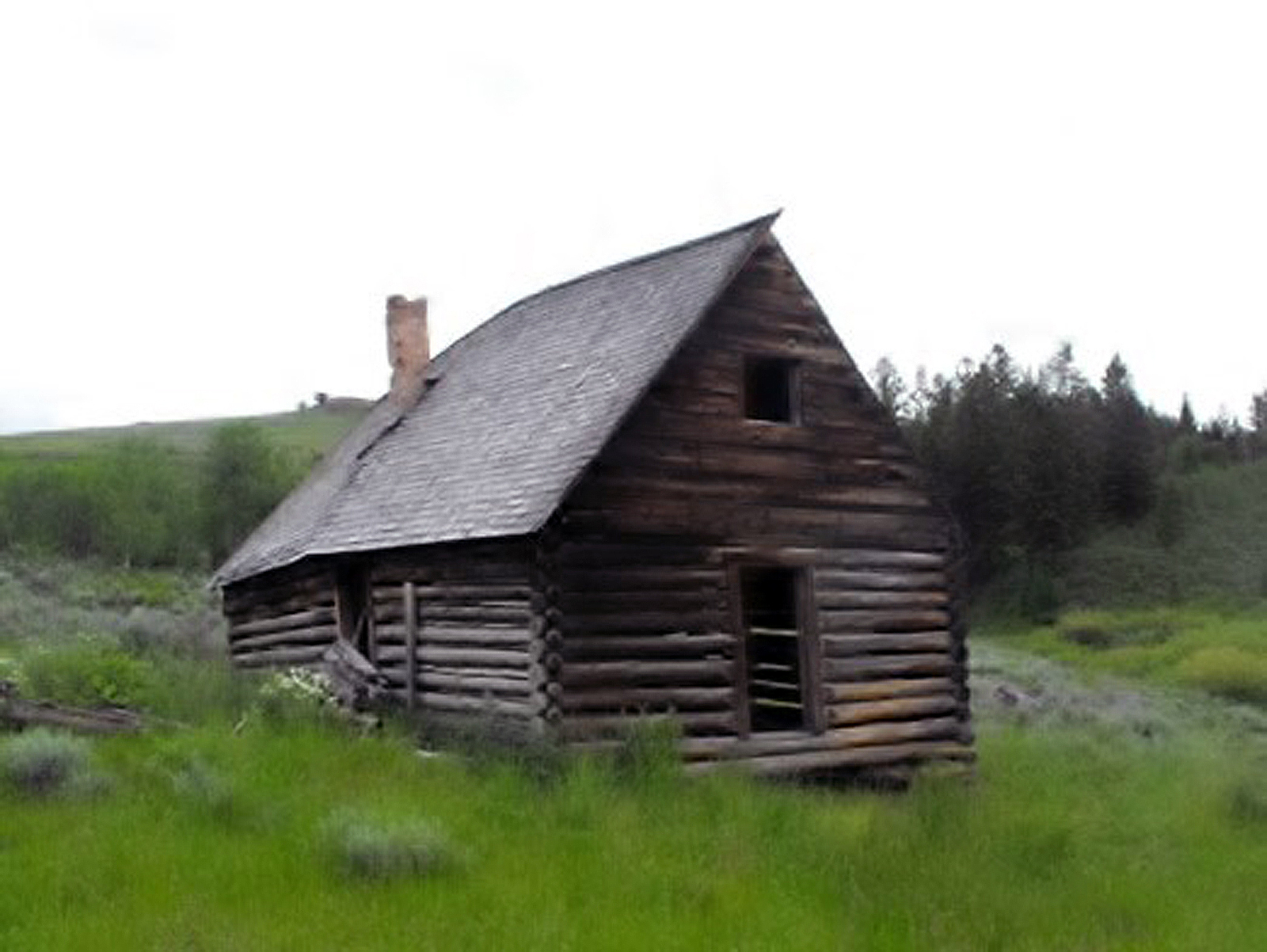
Thomas and Hettie eventually bought 80 acres on the Afton/Grover Road, two miles north of Afton. It was on this land that the well-known story of lightning strike occurred. The lightning burned their home to the ground, scarred the forehead of Fred, and killed the dog walking between Loyn and Roy, who had been out gathering eggs. That story is detailed in the Blacker Epic, in Chapter 10.
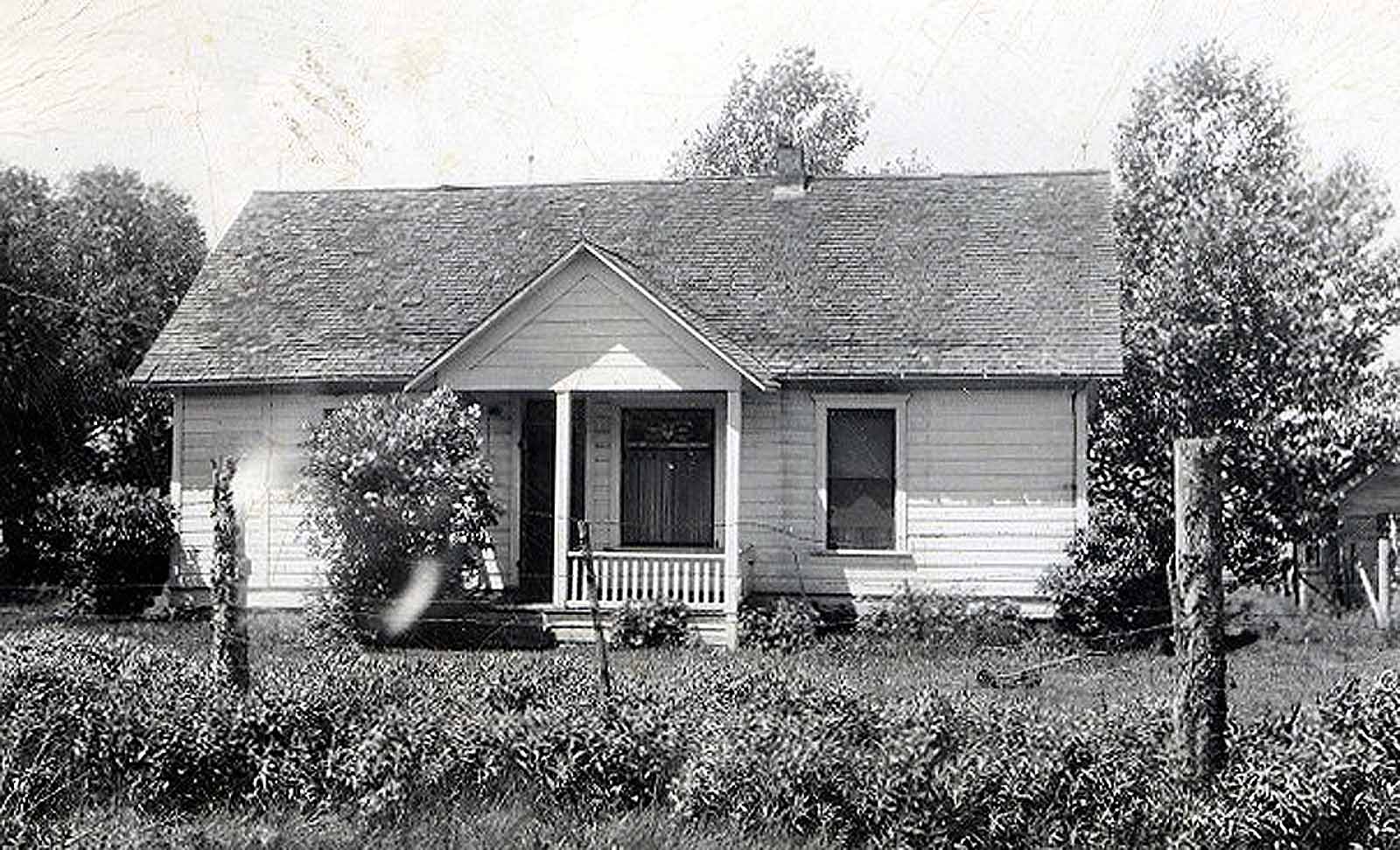 Thomas and Hettie's new home in Afton. The picture was taken in 1946
Thomas and Hettie's new home in Afton. The picture was taken in 1946
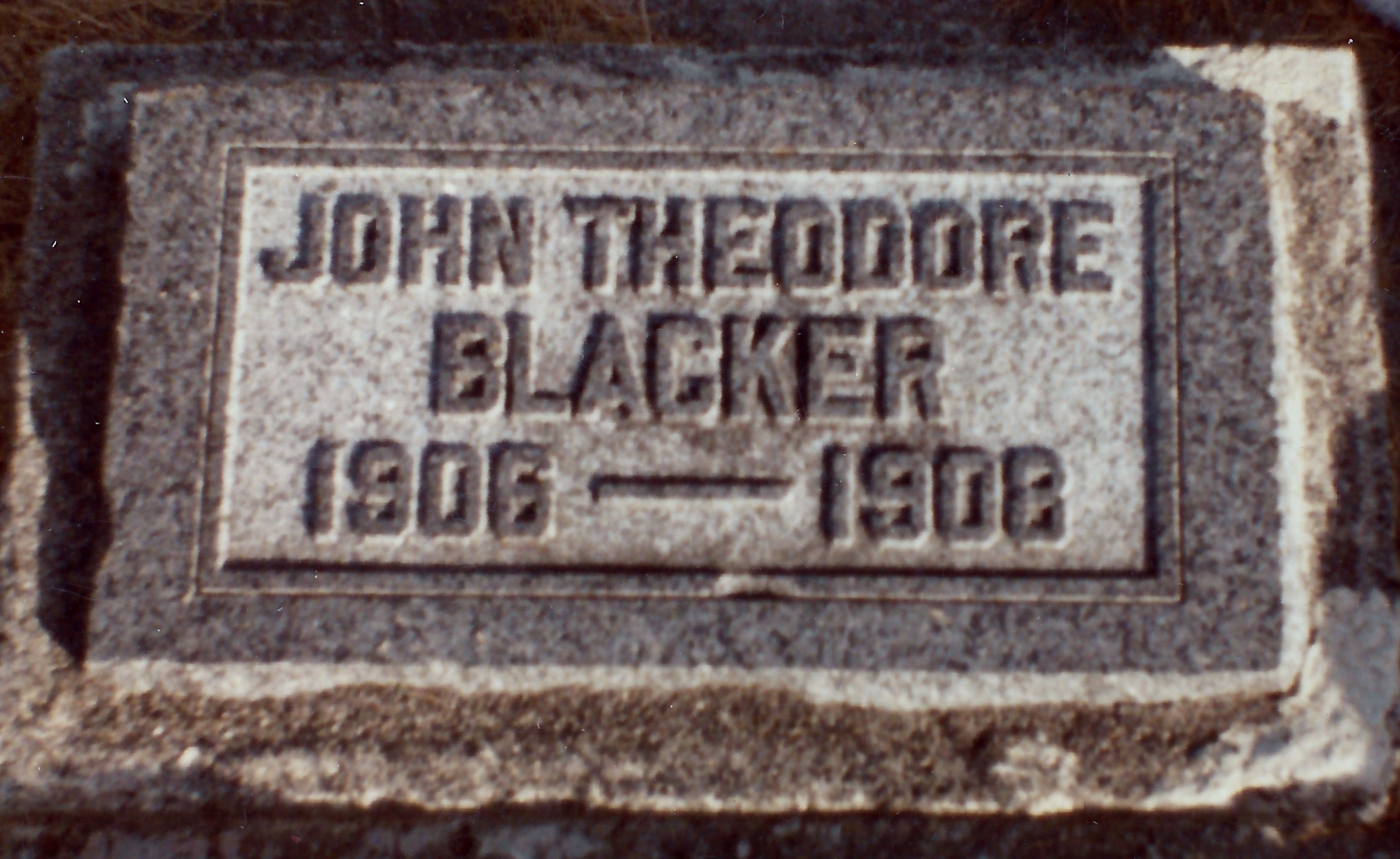
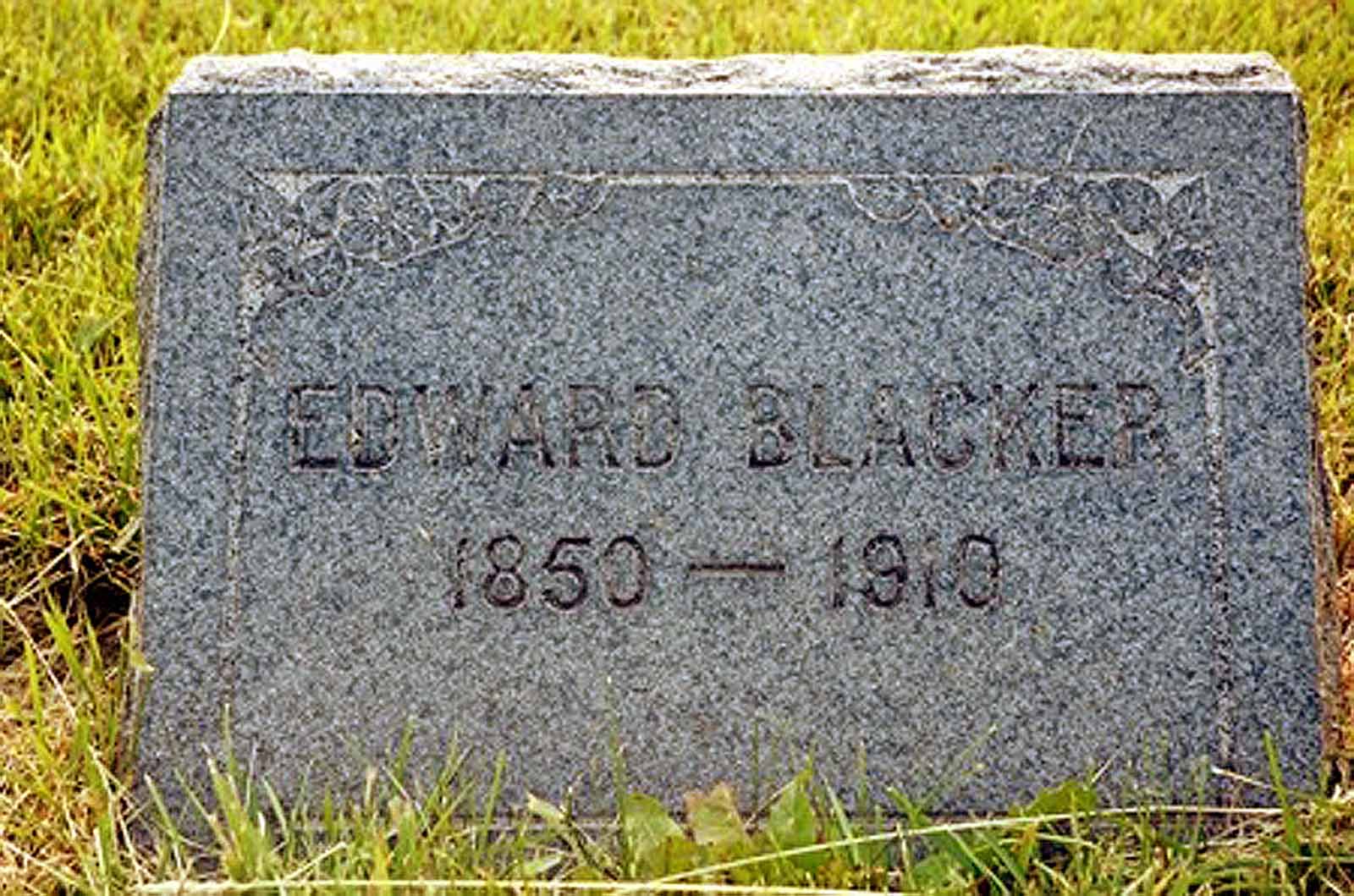
To the family while living in Afton were born, LeRoy, Theodore, Loyn, Fred, Alma, Hyrum, Afton and George. Theodore passed away from whooping cough in 1908 at 1 1/2 years and is buried in Afton,
We see how these two families, the Wilkes and Blackers, each coming to Afton from different areas to better the lives of their families, eventually joined forces to become our ancestors.
On Nov 27, 1910, Edward Blacker, passed away from the effects of black lung disease caused by his years of mining for coal. My father said the following about his death:
"In addition to this single devastating event which affected decisions of mining families who were on the verge of 'having enough', with the Edward Blacker family fitting into that category, there were other mine hazards. Included were the cases of dangerous gases, heavier than air, which found pockets in which it accumulated and often trapped and poisoned men. These traps of death were more sudden in taking their toll, while miner's consumption, such as Grandpa Blacker was experiencing, was just as much a killer, but much, much slower. It would take many months and years to disable a man to the point that he had to leave his employment. In addition to this resultant end, the latter would torment him day and night for years to come, only to be relieved by a merciful death, which would eventually bring relief to the sufferer.
One can quite easily imagine what concern, what grief and heartache would become the lot of one's loved ones as they witnessed him having to struggle to get air into the closing and wasted-away portions of his lungs which are so necessary in transmitting life giving oxygen and other air ingredients into the blood stream in order to sustain life. What price to pay for the privilege of employment! But a means of livelihood was essential - a living had to be provided for one's family and in coal mining camps other types of work are very limited." (Chapter 9 of the Blacker Epic)"
Edward was buried in the Afton Cemetery. Sometime after his death, a new home was built for Althera, which she enjoyed very much after all her years of living and caring for such a big family in a small, log home. This home has been added onto, but is still standing on the original farm today.
Edward's son Thomas Blacker coached and managed the Afton Ward MIA baseball team, and mentioned he would have enough children to make up a team. He had enough, but none of them ever remembered that he ever taught them one end of a bat from the other!
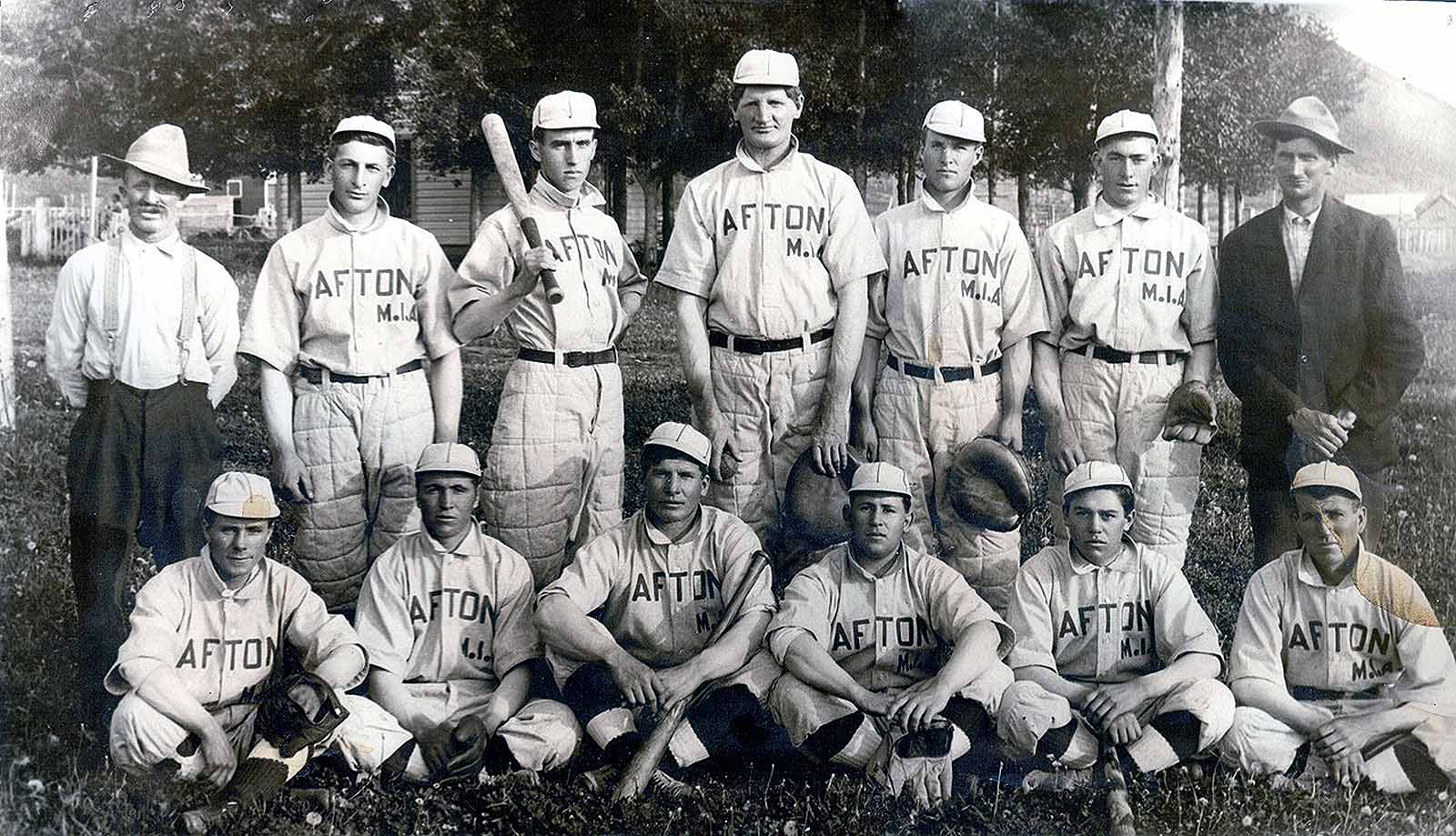 Afton Ward MIA baseball team, Thomas Blacker standing on the far right
Afton Ward MIA baseball team, Thomas Blacker standing on the far right
Children from both families continued to marrying and start their own families. Martha Wilkes worked very hard in their Cottage Hotel, but her health was failing, and after several illnesses, her body wore out. On the 20th of January, 1915, she passed away at her home.
Chapter 11 of the Wilkes Epic contains the following reflections of my father as he stood at her coffin when only a young boy, redheaded like she was.
"Grandma's last sickness overtook her before the middle of January of 1915, a month and a half before she reached her 58th birthday. In our interview with Aunt Mabel in 1965, she related to us the occasion of the passing of her mother. Aunt Sarah Ann Allred, Grandpa Wilkes' sister of St. Charles, had been called to assist in Grandma's last sickness which was not of long duration. Aunt Mabel said she was not told much of her mother's condition - little girls were not told everything by adults - however, she could tell by the way the doctor and Aunt Sarah Ann conversed in whispers that things were not going along too well. Within a day or two after that Grandma passed away on the 20th of January 1915.
She was not yet 58 - too young - but, nevertheless, she was called from us. Our immediate family, too, loved Grandma Wilkes. It used to be a quite regular custom - and Aunt Mabel, in our interview, called attention that Grandma Wilkes looked forward to it also - that our family, on Sundays' would attend Sunday School at 10:30 at the nearby church house just a block away from the Wilkes' home in Afton, and due to sacrament meeting being held at two o'clock, we would usually stop and have dinner with them. Driving a two seated white top buggy, pulled by two white horses, was just a little far to return to our own home two miles away and then return to the meeting within the two intervening hours.
We kids loved to go to Grandma Wilkes' home not only on Sundays, but also on any weekdays when the folk went to town to shop. We didn't often do it because they were busy at the boarding house.
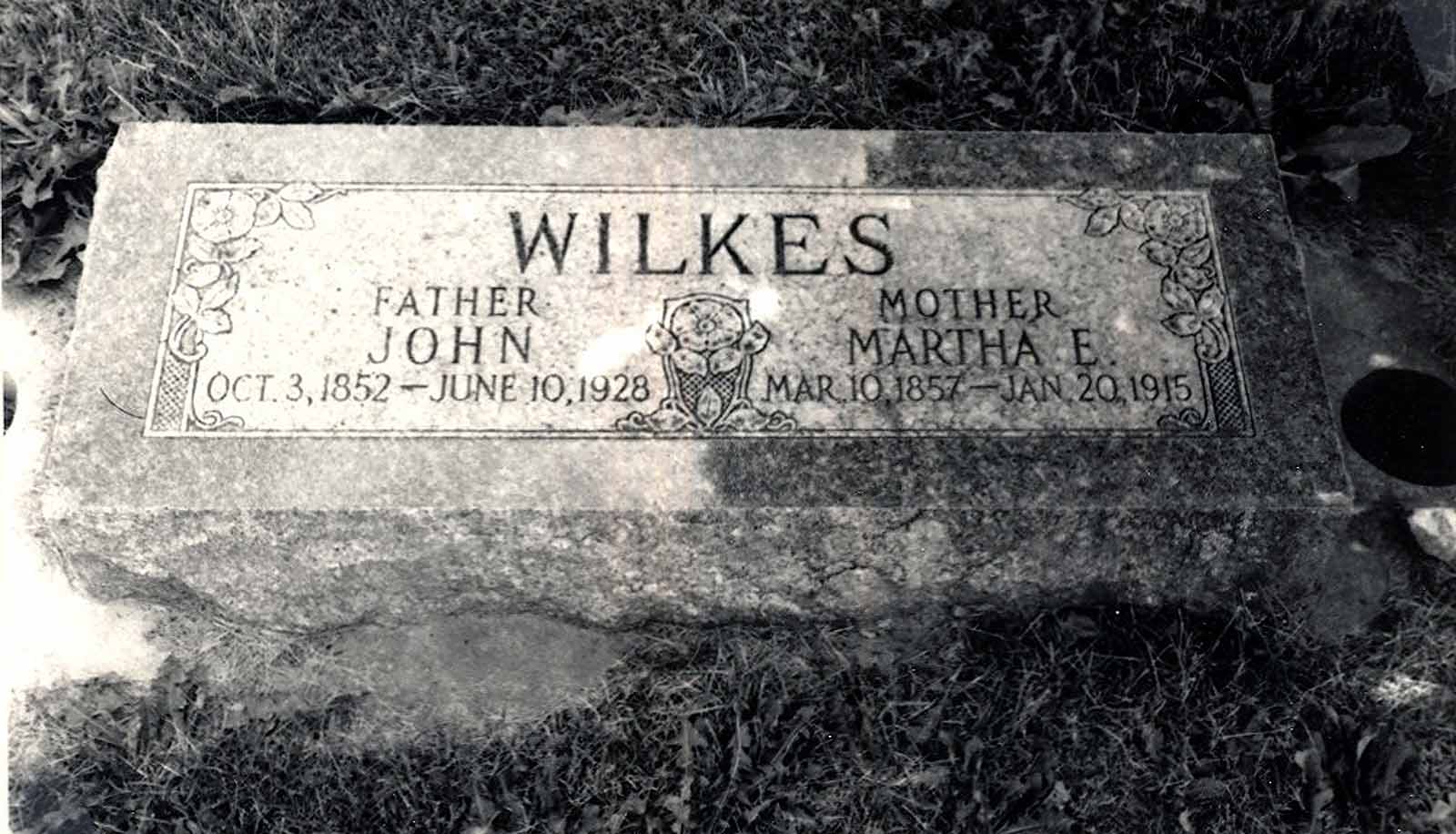
My last memory - and it doesn't fade with the years - in a few months, 70, was the school noon-hour when I took it upon myself - undoubtedly with the permission of my parents prior to my going to school that morning - to go to her home where I was invited in. I entered the living room off to the right after entering the front door, and I stood alone before her casket. The others in the house were busy out in the other rooms. Actually, in those days, they called it the parlor off the living room for the living room was the first room one entered coming thru the front door.
I stood alone with my mackinaw on and my cap in my hands. Young and small for my age, an eight year old - auburn haired like my grandma on whom I was gazing as she lay in her beautiful casket and beautifully dressed. I hadn't remembered seeing anyone in their temple robes before. It was though angels were around. What a peaceful spectacle. What a peaceful appearing soul as she was, to await less than another hour before the sleigh would pull up to the front gate and the men - undoubtedly her own sons and sons-in-law - would gently carry her casket to it and thence to the white ward meeting house a block and a half away. As I stood there, my reaction was to crowd back the tears in my already moist eyes and whisper, "Grandma, we love you".
The little boy had to go back to school. Why, I don't know, but our peers then felt that perhaps it would be better for children not to go to funerals. How I wished that I could go and, in reality, I would liked to have gone all the way to the cemetery five or six blocks still further, but my charge was to return to school. Did the oldsters feel that we young folk would have caused a disturbance? I think Grandma knew that I wouldn't have done. I have thought since how I would have liked to have been Mr. Conrad, the custodian who, at all meetings when the organ was played, sat to the side of the organ and manually pumped the bellows so sweet music could be made. I think Grandma would have especially enjoyed that music that day."
She was dearly loved by both her Wilkes and Blacker descendants. Her husband, John Wilkes lost his crippled left arm after his left hand was scratched as he was sifting through the ashes and debris when their old cabin on their homestead caught fire and burned down. This minor wound became infected and the infection spread to his arm, resulting in the need to have it amputated to save his life. He afterward wore his left sleeve pinned up. After the death of Martha, his wife, he overcame his difficulties with alcohol.
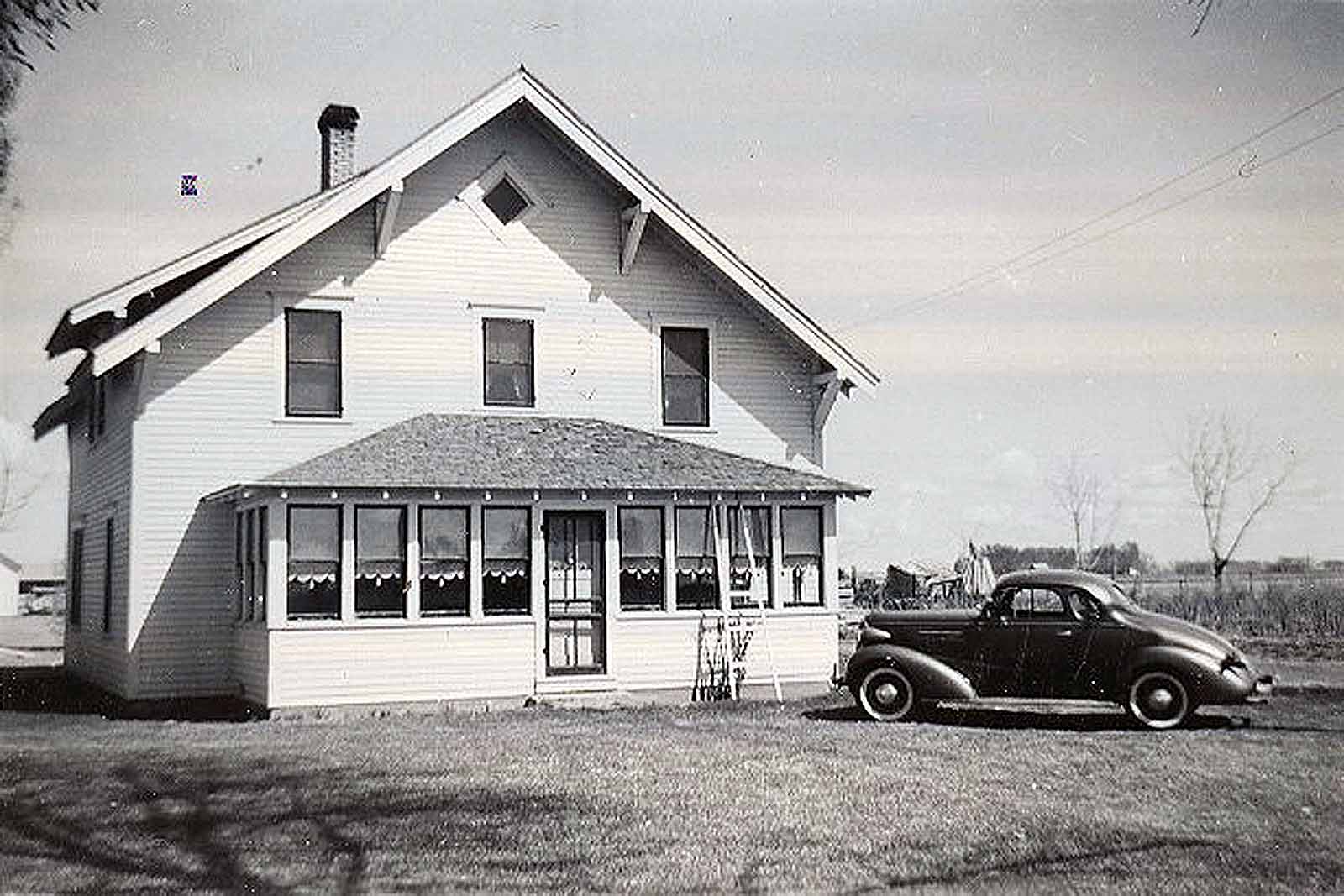 Thomas and Hettie Blacker family home, Rupert, Idaho
Thomas and Hettie Blacker family home, Rupert, Idaho
About 1918 or 1919, Luella Wilkes and her only living son, Edgar, moved to Paul, Idaho to operate a farm. The farm was unsuccessful, so they moved to Burley where they bought a small, corner grocery store. Because she knew her father-in-law, John, had good business skills, she asked him to move to Burley to help them in the store. He accepted the invitation.
On the last two days of Dec,1919, the Thomas and Hettie Blacker family moved to Rupert, Idaho to the Minidoka Irrigation Project, with most of the family traveling by train. Jan. 1, 1920, Thomas and son, Roy followed by train with the household furniture and some farm animals. They lost their first farm, due to the economy, but bravely took up the one most of us know, where cousins Ken and Janet Blacker are now living. In 1920 a daughter, Merintha was born and in 1923 twin sons, Earl and Verl, were born to Thomas and Hettie.
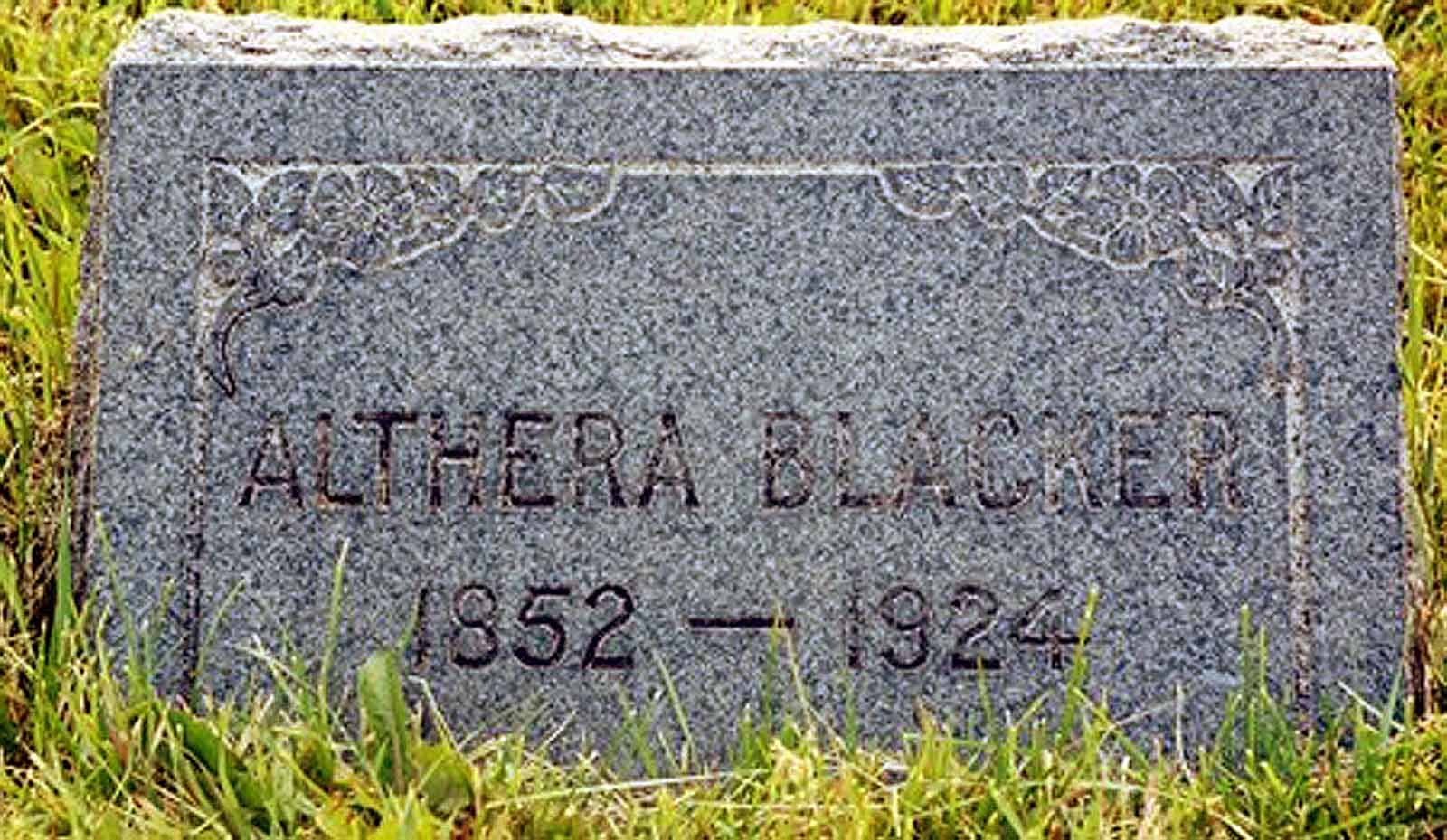
In 1923, Luella and Edgar Wilkes purchased a larger neighborhood grocery store on North Main Street in Pocatello, Idaho. They took John with them, and he continued to help in the store.
Althera Loveday Blacker died January 25, 1924 in Afton at the age of 77. She had started her life in Pontypool, Monmouthshire, Wales, married Edward Blacker in Mountain Ash, Wales, traveled by ship to Illinois, by train to Almy, Wyoming and finally by wagon and on foot to Afton. She was buried beside her husband in the Afton Cemetery.
Thomas and Hettie's twelfth and last child, Marie was born in 1925. All of their children except Theodore grew to adulthood and married creating a large posterity.
John Wilkes died June 10, 1928 in Pocatello, at the age of 76 years. He was buried in Afton beside his wife, Martha Elizabeth. Luella and Edgar continued operating the grocery store.
In the fall of 1942 Thomas and Hettie felt they were to old to operate the farm. They decided to retire and offered to rent the farm to Loyn and Mabel. Loyn resigned his teaching position in Evanston. Mabel and the children stayed in Evanston, while Loyn moved to Rupert to help with the beet harvest. After the harvest Loyn went back to Evanston and brought his family to the farm. The day they arrived Thomas, Hettie, George, Earl, Verl and Marie moved into a home at 1001 H Street in Rupert. In 1945 George, Earl and Marie married and left home.
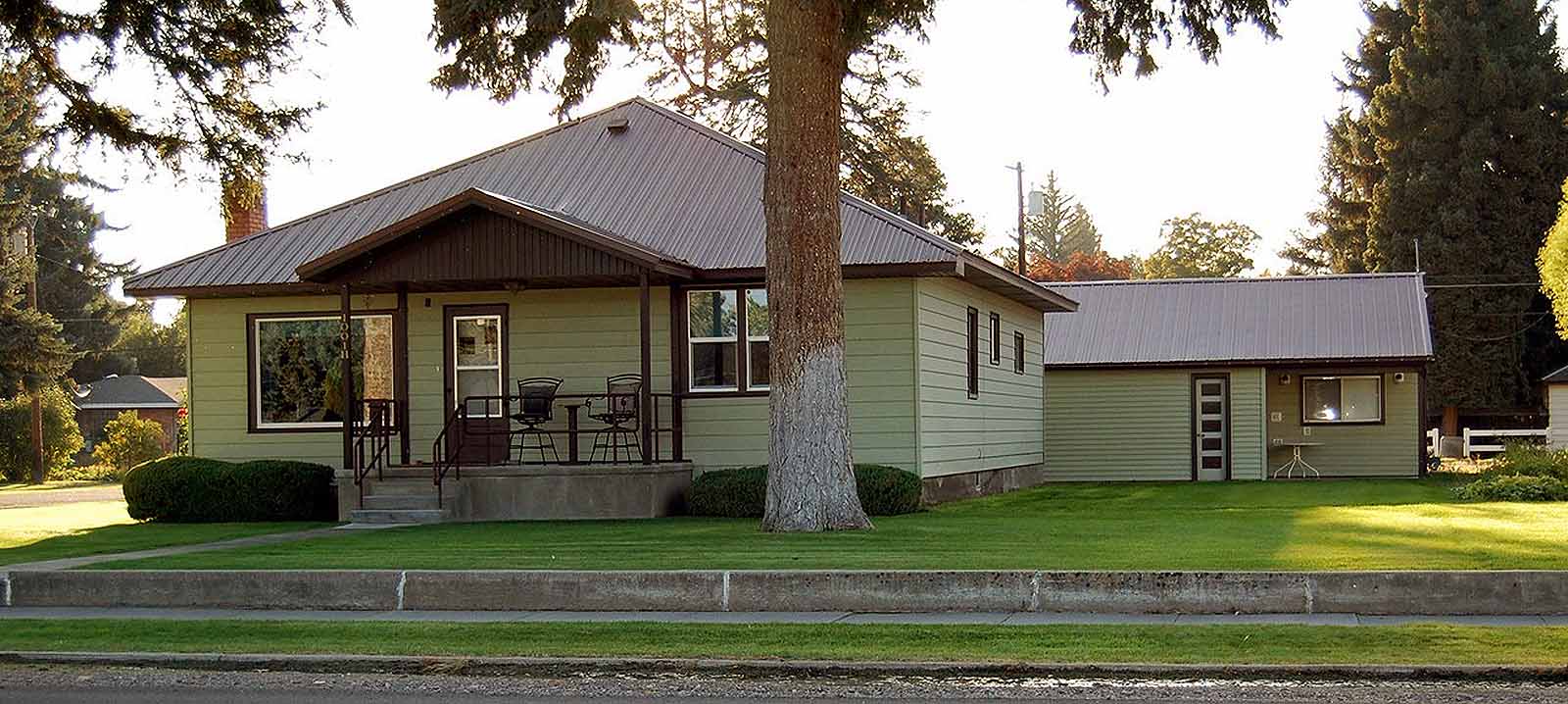 Thomas and Hettie's home at 1001 H Street, Rupert, taken September 29, 2012
Thomas and Hettie's home at 1001 H Street, Rupert, taken September 29, 2012
In 1947 Thomas and Hettie traveled by train to the eastern states and spent two months touring with Thomas' brother William and his wife. They returned home at the end of March.
In October 1947, Hettie was hospitalized in Rupert for a routine operation (I have not been able to learn what is was for). However, on 12 Oct, 1947, she passed away unexpectedly from a blood clot. She was 63 years, 10 months and 23 days old. She was buried in the Rupert cemetery on October 15th.
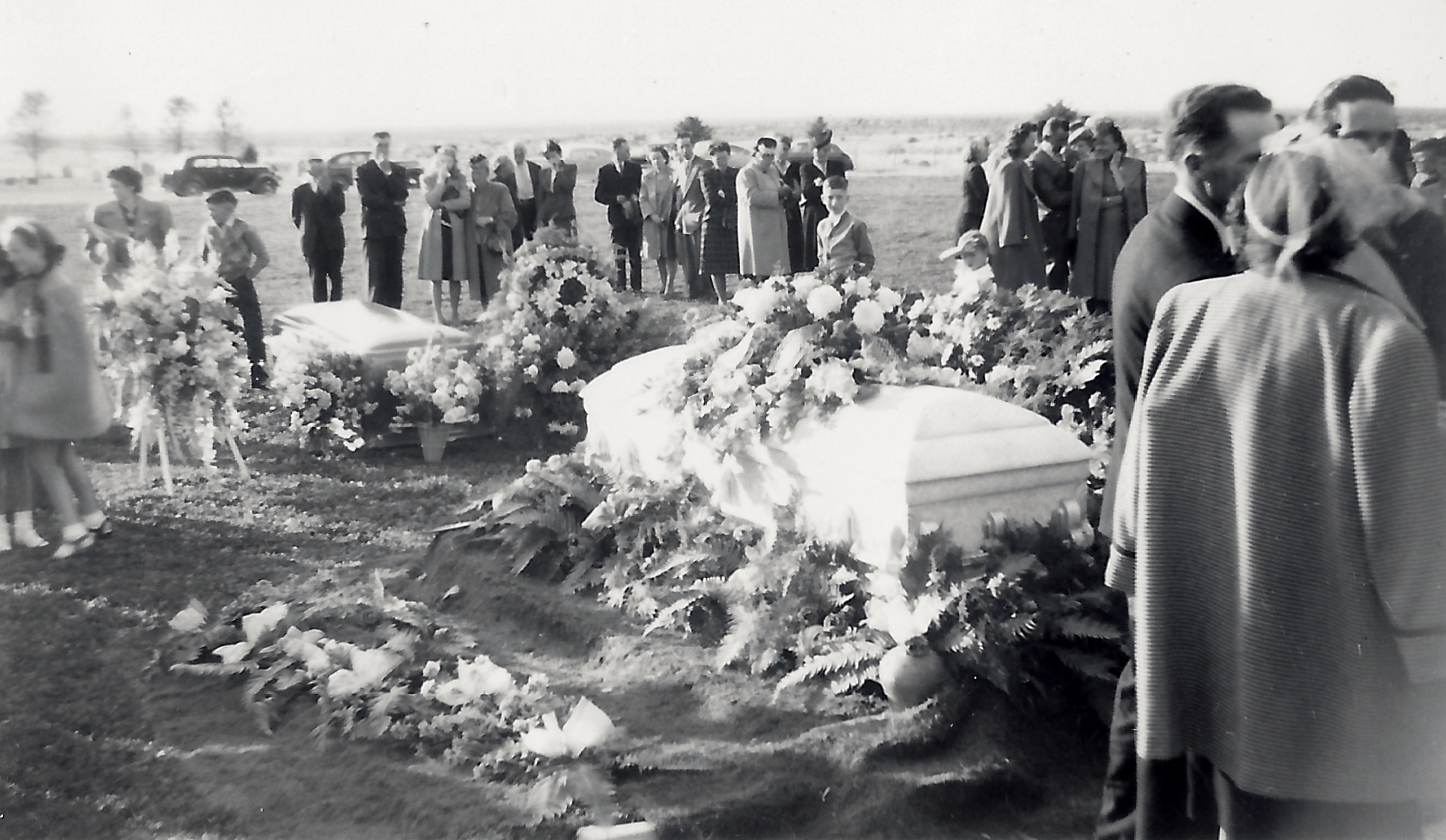 Hettie Blacker's burial in 1947
Hettie Blacker's burial in 1947
Thomas was very lonely after Hettie died. He visited Luella Wilkes in Pocatello. She had been married to Hettie's brother Johnnie, who had been dead for about forty years. They had known each other all their lives and decided to get married. They were married in the Idaho Falls Temple for time only on June 22, 1948. After they were married, Verl moved out of the home into an apartment. They continued to live in the home, spending the winters in Mesa, Arizona.
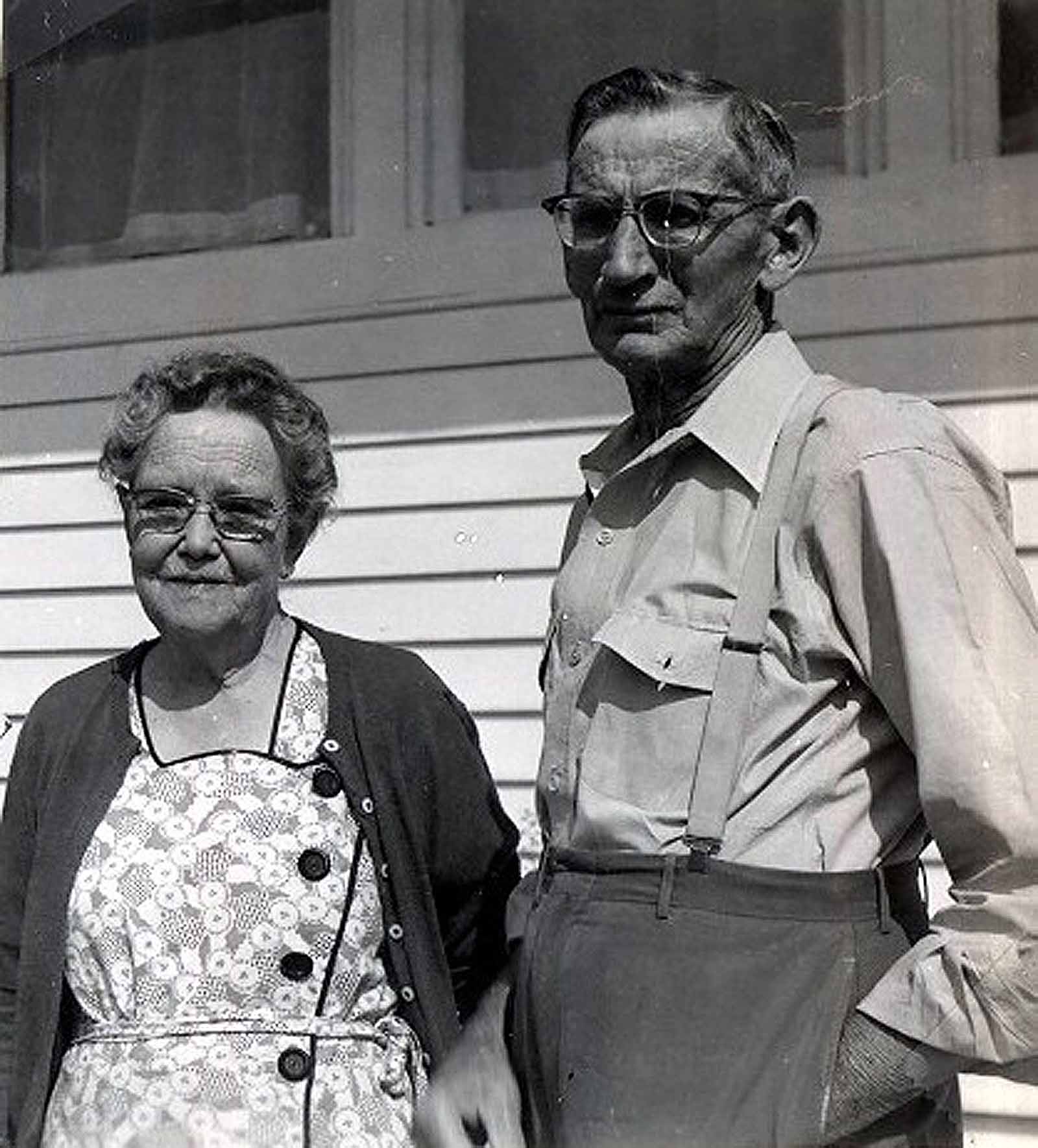 Luella Wilkes and Thomas Blacker
Luella Wilkes and Thomas Blacker
They were in Mesa March, 1957 when he started having circulation problems in his right leg. Eventually a blood clot above the leg made it necessary to amputate it. After that he became very weak and died at 2:00 a.m., March, 28, 1957. He was 77 years old. He was buried April 3rd in the Rupert Cemetery beside Hettie.
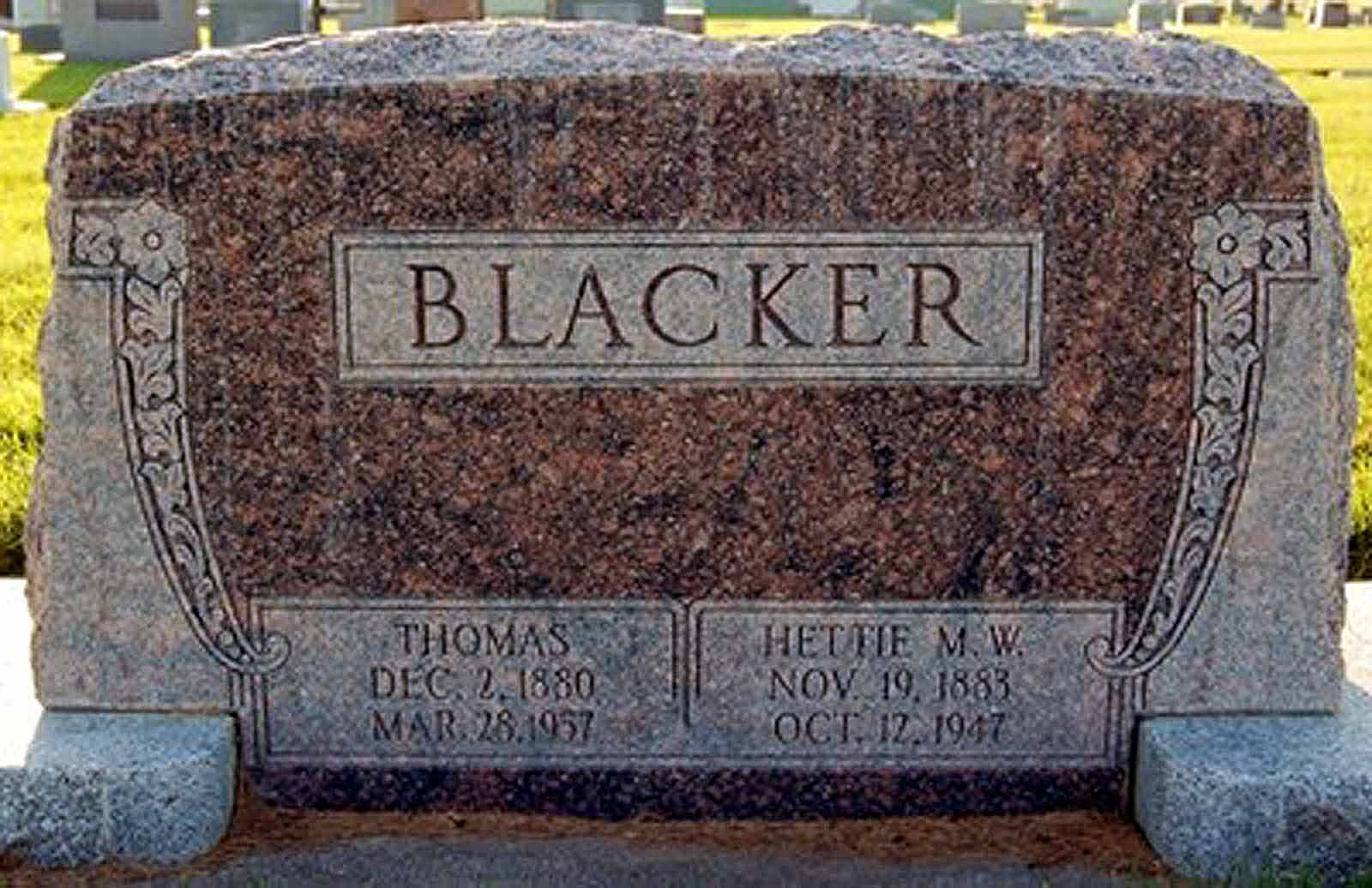
After Thomas' death Luella continued to live in the home in Rupert until she moved to live with her son, Edgar's family. She passed away in July of 1963 and was buried in Afton next her first husband, Johnnie.
This closes the history of our immediate family of the Wilkes and Blackers who had settled and lived in Afton, Wyoming.
This is my attempt to simplify the stories of a few of our many ancestors...those who settled in Afton, Wyoming. I realize there may be inadvertent errors, and will welcome any corrections from the family. We owe these people so much for the huge sacrifices they made to prepare the way for us, and for the great blessing of their becoming members of the Church, so that we could enjoy the great heritage they left to us. We can honor their lives by learning more about them and by passing on their histories to our children and grandchildren. All this knowledge can be lost in one generation if we fail to turn our hearts and the hearts of our children to them.
TO AN ANCESTOR
by Georgia Moore Eberling
I never met you, but I think I know
so much about you, that I almost see
your form beside me as I onward go.
At times it seems I hear you speak to me.
I am the one to whom you handed down
your dreams, your wondrous knowledge, and your looks.
You gave to me the dreamer's laurel crown,
a love of singing words, and poets' books.
Sometimes I wonder if the words I write
are yours or mine, for it is hard to tell,
those words that come in lovely trailing white
or clad in black to sound a warning knell!
Dear One, my spirit knows this to be true:
You are a part of me and I of you.